{"video":[{"pos":{"top":0,"left":0},"time":{"start":279,"end":3257.736417},"spot":null,"idx":0,"id":"vd-0","videoId":0},{"pos":{"top":0,"left":0},"time":{"start":483,"end":3257.736417},"spot":null,"idx":1,"id":"vd-1","videoId":1},{"pos":{"top":0,"left":0},"time":{"start":470,"end":3257.736417},"spot":null,"idx":2,"id":"vd-2","videoId":2},{"pos":{"top":0,"left":0},"time":{"start":3000,"end":3257.736417},"spot":null,"idx":3,"id":"vd-3","videoId":3},{"pos":{"top":0,"left":0},"time":{"start":1490,"end":3257.736417},"spot":null,"idx":4,"id":"vd-4","videoId":4},{"pos":{"top":0,"left":0},"time":{"start":1050,"end":3257.736417},"spot":null,"idx":5,"id":"vd-5","videoId":5},{"pos":{"top":0,"left":0},"time":{"start":1763,"end":3257.736417},"spot":null,"idx":6,"id":"vd-6","videoId":6},{"pos":{"top":0,"left":0},"time":{"start":1800,"end":3257.736417},"spot":null,"idx":7,"id":"vd-7","videoId":7},{"pos":{"top":0,"left":0},"time":{"start":3040,"end":3257.736417},"spot":null,"idx":8,"id":"vd-8","videoId":8},{"pos":{"top":0,"left":0},"time":{"start":3060,"end":3257.736417},"spot":null,"idx":9,"id":"vd-9","videoId":9}],"contents":[{"id":"wk-0","pos":{"top":5,"left":96},"time":{"start":171,"end":203.9},"art":"Battle of Ortona","lang":"en","wiki":"<div style=\"float:left;margin-right:10px\"><img src=\"http://upload.wikimedia.org/wikipedia/commons/thumb/d/d4/Ortona.jpg/300px-Ortona.jpg\"></div><br><div>\n<p>The <b>Battle of Ortona</b> (20–28 December 1943) was a small, yet extremely fierce battle fought between a battalion of German <i>Fallschirmjäger</i> (paratroops) from the German 1st Parachute Division under <i>Generalleutnant</i> Richard Heidrich, and assaulting Canadian forces from the Canadian 1st Infantry Division under Major General Chris Vokes. It was the culmination of the fighting on the Adriatic front in Italy during <b>\"Bloody December\"</b>. The battle, known to those who fought it as the <b>\"Italian Stalingrad\"</b> for the deadliness of its close-quarters combat, took place in the small Adriatic Sea town of Ortona, with its peacetime population of 10,000.</p>\n\n<p><br>\n</p>\n\n\n<!-- \nNewPP limit report\nParsed by mw1228\nCached time: 20151028144017\nCache expiry: 2592000\nDynamic content: false\nCPU time usage: 0.156 seconds\nReal time usage: 0.218 seconds\nPreprocessor visited node count: 1361/1000000\nPreprocessor generated node count: 0/1500000\nPost‐expand include size: 31383/2097152 bytes\nTemplate argument size: 3960/2097152 bytes\nHighest expansion depth: 12/40\nExpensive parser function count: 2/500\nLua time usage: 0.054/10.000 seconds\nLua memory usage: 2.69 MB/50 MB\nNumber of Wikibase entities loaded: 0-->\n\n<!-- \nTransclusion expansion time report (%,ms,calls,template)\n100.00% 208.131 1 - -total\n 31.28% 65.097 1 - Template:Infobox_military_conflict\n 20.45% 42.569 4 - Template:Broken_ref\n 16.02% 33.337 3 - Template:Cite_web\n 14.74% 30.670 1 - Template:Use_dmy_dates\n 14.34% 29.842 1 - Template:Campaignbox_Winter_Line\n 13.33% 27.739 1 - Template:Campaignbox\n 12.35% 25.707 1 - Template:Military_navigation\n 11.95% 24.872 1 - Template:Page_needed\n 10.57% 21.998 1 - Template:Fix\n-->\n</div><a href=\"http://en.wikipedia.org/wiki/Battle of Ortona\" target=\"_blank\">Continua a leggere..</a>","title":"Battle of Ortona"},{"id":"wk-1","pos":{"top":5,"left":96},"time":{"start":83.4,"end":113.4},"art":"Ortona","lang":"en","wiki":"<div style=\"float:left;margin-right:10px\"><img src=\"http://upload.wikimedia.org/wikipedia/commons/thumb/4/44/Ortona_2000_by-RaBoe-01.jpg/250px-Ortona_2000_by-RaBoe-01.jpg\"></div><br><div>\n\n<p><b>Ortona</b> is a coastal town and municipality of the Province of Chieti in the Italian region of Abruzzo, with some 23,000 inhabitants.</p>\n<p>Ortona was the site of fierce fighting between the 1st Fallschirmjäger Division and the 1st Canadian Infantry Division during the Italian campaign in World War II. The ferocity of the battle led it to be known as the \"Little Stalingrad\" (See Battle of Ortona).</p>\n\n\n<!-- \nNewPP limit report\nParsed by mw1128\nCached time: 20151028143937\nCache expiry: 2592000\nDynamic content: false\nCPU time usage: 0.613 seconds\nReal time usage: 0.706 seconds\nPreprocessor visited node count: 3837/1000000\nPreprocessor generated node count: 0/1500000\nPost‐expand include size: 39821/2097152 bytes\nTemplate argument size: 5500/2097152 bytes\nHighest expansion depth: 26/40\nExpensive parser function count: 2/500\nLua time usage: 0.217/10.000 seconds\nLua memory usage: 2.27 MB/50 MB\nNumber of Wikibase entities loaded: 1-->\n\n<!-- \nTransclusion expansion time report (%,ms,calls,template)\n100.00% 666.673 1 - -total\n 94.62% 630.777 1 - Template:Infobox_Italian_comune\n 88.30% 588.641 1 - Template:Infobox_settlement\n 74.00% 493.329 2 - Template:Infobox\n 12.62% 84.163 1 - Template:Geobox_coor\n 7.54% 50.261 13 - Template:Both\n 7.20% 47.991 2 - Template:Lang\n 6.72% 44.827 3 - Template:Infobox_settlement/metric\n 6.57% 43.803 2 - Template:Category_handler\n 6.02% 40.106 1 - Template:Infobox_settlement/areadisp\n-->\n</div><a href=\"http://en.wikipedia.org/wiki/Ortona\" target=\"_blank\">Continua a leggere..</a>","title":"Ortona"},{"id":"wk-2","pos":{"top":5,"left":96},"time":{"start":407.3,"end":437.3},"art":"Allied invasion of Sicily","lang":"en","wiki":"<div style=\"float:left;margin-right:10px\"><img src=\"http://upload.wikimedia.org/wikipedia/commons/thumb/b/b3/SC180476.jpg/300px-SC180476.jpg\"></div><br><div>\n\n\n\n\n\n<p>The <b>Allied invasion of Sicily</b>, codenamed <b>Operation Husky</b>, was a major campaign of World War II, in which the Allies took Sicily from the Axis Powers (Italy and Nazi Germany). It was a large amphibious and airborne operation, followed by a six-week land campaign and was the beginning of the Italian Campaign.</p>\n<p><i>Husky</i> began on the night of 9/10 July 1943, and ended on 17 August. Strategically, <i>Husky</i> achieved the goals set out for it by Allied planners; the Allies drove Axis air, land and naval forces from the island and the Mediterranean sea lanes were opened for Allied merchant ships for the first time since 1941. Benito Mussolini was toppled from power in Italy and the way was opened for the invasion of Italy. Hitler \"canceled a major offensive at Kursk after only a week, in part to divert forces to Italy,\" resulting in a reduction of German strength on the Eastern Front.</p>\n\n\n\n<!-- \nNewPP limit report\nParsed by mw1206\nCached time: 20151028144116\nCache expiry: 2592000\nDynamic content: false\nCPU time usage: 0.281 seconds\nReal time usage: 0.359 seconds\nPreprocessor visited node count: 3622/1000000\nPreprocessor generated node count: 0/1500000\nPost‐expand include size: 81547/2097152 bytes\nTemplate argument size: 15480/2097152 bytes\nHighest expansion depth: 12/40\nExpensive parser function count: 3/500\nLua time usage: 0.064/10.000 seconds\nLua memory usage: 2.03 MB/50 MB\nNumber of Wikibase entities loaded: 0-->\n\n<!-- \nTransclusion expansion time report (%,ms,calls,template)\n100.00% 259.250 1 - -total\n 38.27% 99.218 1 - Template:Infobox_military_conflict\n 30.72% 79.635 4 - Template:Campaignbox\n 29.46% 76.371 4 - Template:Military_navigation\n 27.18% 70.475 4 - Template:Navbox\n 16.92% 43.868 1 - Template:Use_dmy_dates\n 13.89% 36.002 1 - Template:Campaignbox_Mediterranean_Campaign\n 10.21% 26.482 7 - Template:Flag\n 9.88% 25.625 20 - Template:WPMILHIST_Infobox_style\n 8.67% 22.475 13 - Template:Flagicon\n-->\n</div><a href=\"http://en.wikipedia.org/wiki/Allied invasion of Sicily\" target=\"_blank\">Continua a leggere..</a>","title":"Allied invasion of Sicily"},{"id":"wk-3","pos":{"top":5,"left":96},"time":{"start":468,"end":489.7},"art":"Mark Wayne Clark","lang":"en","wiki":"<div style=\"float:left;margin-right:10px\"><img src=\"http:null\"></div><br><div>\n\n<!-- \nNewPP limit report\nParsed by mw1121\nCached time: 20151028144211\nCache expiry: 2592000\nDynamic content: false\nCPU time usage: 0.000 seconds\nReal time usage: 0.001 seconds\nPreprocessor visited node count: 0/1000000\nPreprocessor generated node count: 0/1500000\nPost‐expand include size: 0/2097152 bytes\nTemplate argument size: 0/2097152 bytes\nHighest expansion depth: 0/40\nExpensive parser function count: 0/500\nNumber of Wikibase entities loaded: 0-->\n\n<!-- \nTransclusion expansion time report (%,ms,calls,template)\n100.00% 0.000 1 - -total\n-->\n</div><a href=\"http://en.wikipedia.org/wiki/Mark Wayne Clark\" target=\"_blank\">Continua a leggere..</a>","title":"Mark Wayne Clark"},{"id":"wk-4","pos":{"top":5,"left":96},"time":{"start":544,"end":574.2},"art":"Albert Kesselring","lang":"en","wiki":"<div style=\"float:left;margin-right:10px\"><img src=\"http://upload.wikimedia.org/wikipedia/commons/thumb/0/0f/Bundesarchiv_Bild_183-R93434,_Albert_Kesselring.jpg/220px-Bundesarchiv_Bild_183-R93434,_Albert_Kesselring.jpg\"></div><br><div>\n<p><b>Albert Kesselring</b> (30 November 1885 – 16 July 1960) was a German <i>Luftwaffe Generalfeldmarschall</i> during World War II. In a military career that spanned both World Wars, Kesselring became one of Nazi Germany's most skilful commanders, being one of 27 soldiers awarded the Knight's Cross of the Iron Cross with Oak Leaves, Swords and Diamonds. Nicknamed \"Smiling Albert\" by the Allies and \"Uncle Albert\" by his troops, he was one of the most popular generals of World War II with the rank and file.</p>\n<p>Kesselring joined the Bavarian Army as an officer cadet in 1904, and served in the artillery branch. He completed training as a balloon observer in 1912. During World War I, he served on both the Western and Eastern fronts and was posted to the General Staff, despite not having attended the War Academy. Kesselring remained in the Army after the war but was discharged in 1933 to become head of the Department of Administration at the Reich Commissariat for Aviation, where he was involved in the re-establishment of the aviation industry and the laying of the foundations for the <i>Luftwaffe</i>, serving as its chief of staff from 1936 to 1938.</p>\n<p>During World War II he commanded air forces in the invasions of Poland and France, the Battle of Britain and Operation <i>Barbarossa</i>. As Commander-in-Chief South, he was overall German commander in the Mediterranean theatre, which included the operations in North Africa. Kesselring conducted an uncompromising defensive campaign against the Allied forces in Italy until he was injured in an accident in October 1944. In the final campaign of the war, he commanded German forces on the Western Front. He won the respect of his Allied opponents for his military accomplishments, but his record was marred by massacres committed by troops under his command in Italy.</p>\n<p>After the war, Kesselring was tried for war crimes and sentenced to death. The sentence was subsequently commuted to life imprisonment. A political and media campaign resulted in his release in 1952, ostensibly on health grounds. He was one of only three <i>Generalfeldmarschalls</i> to publish his memoirs, entitled <i>Soldat bis zum letzten Tag</i> (<i>A Soldier to the Last Day</i>).<br>\n</p>\n\n\n\n<!-- \nNewPP limit report\nParsed by mw1123\nCached time: 20151028144257\nCache expiry: 86400\nDynamic content: true\nCPU time usage: 0.243 seconds\nReal time usage: 0.319 seconds\nPreprocessor visited node count: 1044/1000000\nPreprocessor generated node count: 0/1500000\nPost‐expand include size: 16009/2097152 bytes\nTemplate argument size: 4072/2097152 bytes\nHighest expansion depth: 16/40\nExpensive parser function count: 1/500\nLua time usage: 0.072/10.000 seconds\nLua memory usage: 1.56 MB/50 MB\nNumber of Wikibase entities loaded: 0-->\n\n<!-- \nTransclusion expansion time report (%,ms,calls,template)\n100.00% 291.876 1 - -total\n 56.04% 163.563 1 - Template:Infobox_military_person\n 54.07% 157.809 1 - Template:Infobox\n 23.99% 70.026 2 - Template:Broken_ref\n 19.13% 55.825 3 - Template:Br_separated_entries\n 15.54% 45.352 1 - Template:Use_dmy_dates\n 10.83% 31.614 3 - Template:Flag\n 5.49% 16.012 1 - Template:DMCA\n 5.46% 15.946 1 - Template:Birth_date\n 4.84% 14.136 1 - Template:Death_date_and_age\n-->\n</div><a href=\"http://en.wikipedia.org/wiki/Albert Kesselring\" target=\"_blank\">Continua a leggere..</a>","title":"Albert Kesselring"},{"id":"wk-5","pos":{"top":5,"left":96},"time":{"start":576.1,"end":606.1},"art":"Winter Line","lang":"en","wiki":"<div>\n\n\n\n<p>The <b>Winter Line</b> was a series of German military fortifications in Italy, constructed during World War II by Organisation Todt. The primary <b>Gustav Line</b> ran across Italy from just north of where the Garigliano River flows into the Tyrrhenian Sea in the west, through the Apennine Mountains to the mouth of the Sangro River on the Adriatic coast in the east. There were two subsidiary lines, the Bernhardt Line in front of the main Gustav positions, and the Hitler Line five miles behind it.</p>\n\n\n<!-- \nNewPP limit report\nParsed by mw1145\nCached time: 20151029102739\nCache expiry: 2592000\nDynamic content: false\nCPU time usage: 0.140 seconds\nReal time usage: 0.180 seconds\nPreprocessor visited node count: 1021/1000000\nPreprocessor generated node count: 0/1500000\nPost‐expand include size: 24398/2097152 bytes\nTemplate argument size: 3138/2097152 bytes\nHighest expansion depth: 11/40\nExpensive parser function count: 1/500\nLua time usage: 0.057/10.000 seconds\nLua memory usage: 1.59 MB/50 MB\nNumber of Wikibase entities loaded: 0-->\n\n<!-- \nTransclusion expansion time report (%,ms,calls,template)\n100.00% 144.862 1 - -total\n 52.99% 76.765 1 - Template:No_footnotes\n 42.62% 61.744 2 - Template:Campaignbox\n 40.19% 58.216 2 - Template:Military_navigation\n 35.60% 51.569 2 - Template:Navbox\n 33.16% 48.032 1 - Template:Ambox\n 31.97% 46.312 1 - Template:Campaignbox_Italy\n 15.41% 22.328 10 - Template:WPMILHIST_Infobox_style\n 14.73% 21.339 1 - Template:Campaignbox_Winter_Line\n-->\n</div><a href=\"http://en.wikipedia.org/wiki/Winter Line\" target=\"_blank\">Continua a leggere..</a>","title":"Winter Line"},{"id":"wk-6","pos":{"top":5,"left":96},"time":{"start":673,"end":705.4},"art":"Royal Air Force","lang":"en","wiki":"<div style=\"float:left;margin-right:10px\"><img src=\"http://upload.wikimedia.org/wikipedia/en/thumb/8/8a/Royal_Airforce_Badge.png/212px-Royal_Airforce_Badge.png\"></div><br><div>\n\n<p>The <b>Royal Air Force</b> (<b>RAF</b>) is the United Kingdom's aerial warfare force. Formed toward the end of the First World War on 1 April 1918, it is the oldest independent air force in the world. Following victory over the Central Powers in 1918 the RAF emerged as, at the time, the largest air force in the world. Since its formation, the RAF has taken a significant role in British military history, in particular, playing a large part in the Second World War where it fought its most famous campaign, the Battle of Britain.</p>\n<p>The RAF's mission is to support the objectives of the British Ministry of Defence (MoD), which are to \"provide the capabilities needed: to ensure the security and defence of the United Kingdom and overseas territories, including against terrorism; to support the Government’s foreign policy objectives particularly in promoting international peace and security.\" The RAF describe its mission statement as \"... [to provide] An <i>agile</i>, <i>adaptable</i> and <i>capable</i> Air Force that, person for person, is second to none, and that makes a decisive air power contribution in support of the UK Defence Mission.\" The mission statement is supported by the RAF's definition of air power, which guides its strategy. Air power is defined as: \"The ability to project power from the air and space to influence the behaviour of people or the course of events.\"</p>\n<p>Today the Royal Air Force maintains an operational fleet of various types of aircraft, described by the RAF as being \"leading-edge\" in terms of technology. This largely consists of fixed-wing aircraft, including: fighter and strike aircraft, airborne early warning and control aircraft, ISTAR and SIGINT aircraft, aerial refueling aircraft and strategic and tactical transport aircraft. The majority of the RAF's rotary-wing aircraft form part of the tri-service Joint Helicopter Command in support of ground forces. Most of the RAF's aircraft and personnel are based in the UK, with many others serving on operations (principally Afghanistan) or at long-established overseas bases (Ascension Island, Cyprus, Gibraltar, and the Falkland Islands). Although the RAF is the principal British air power arm, the Royal Navy's Fleet Air Arm and the British Army's Army Air Corps also deliver air power which is integrated into the maritime, littoral and land environments.<br>\n</p>\n\n\n\n<!-- \nNewPP limit report\nParsed by mw1195\nCached time: 20151029102902\nCache expiry: 3600\nDynamic content: true\nCPU time usage: 0.238 seconds\nReal time usage: 0.319 seconds\nPreprocessor visited node count: 1528/1000000\nPreprocessor generated node count: 0/1500000\nPost‐expand include size: 32973/2097152 bytes\nTemplate argument size: 8535/2097152 bytes\nHighest expansion depth: 14/40\nExpensive parser function count: 2/500\nLua time usage: 0.083/10.000 seconds\nLua memory usage: 3.08 MB/50 MB\nNumber of Wikibase entities loaded: 0-->\n\n<!-- \nTransclusion expansion time report (%,ms,calls,template)\n100.00% 291.180 1 - -total\n 39.99% 116.447 1 - Template:Infobox_military_unit\n 37.62% 109.529 1 - Template:Infobox\n 14.01% 40.788 4 - Template:Broken_ref\n 12.81% 37.298 1 - Template:Lang-la\n 12.30% 35.813 4 - Template:Cite_web\n 11.93% 34.734 1 - Template:Language_with_name\n 10.86% 31.623 1 - Template:Lang\n 10.47% 30.495 1 - Template:About\n 9.76% 28.430 1 - Template:Category_handler\n-->\n</div><a href=\"http://en.wikipedia.org/wiki/Royal Air Force\" target=\"_blank\">Continua a leggere..</a>","title":"Royal Air Force"},{"id":"wk-7","pos":{"top":5,"left":96},"time":{"start":976.7,"end":1006.7},"art":"Christopher Vokes","lang":"en","wiki":"<div style=\"float:left;margin-right:10px\"><img src=\"http://upload.wikimedia.org/wikipedia/commons/thumb/3/39/Moncel_and_Vokes.jpg/300px-Moncel_and_Vokes.jpg\"></div><br><div>\n<p>Major General <b>Christopher Vokes</b> <span style=\"font-size:100%;\">CB, CBE, DSO, CD</span> (13 April 1904 – 27 March 1985) was a Canadian soldier.</p>\n\n\n<!-- \nNewPP limit report\nParsed by mw1142\nCached time: 20151029103022\nCache expiry: 86400\nDynamic content: true\nCPU time usage: 0.150 seconds\nReal time usage: 0.177 seconds\nPreprocessor visited node count: 901/1000000\nPreprocessor generated node count: 0/1500000\nPost‐expand include size: 9314/2097152 bytes\nTemplate argument size: 2121/2097152 bytes\nHighest expansion depth: 16/40\nExpensive parser function count: 0/500\nLua time usage: 0.042/10.000 seconds\nLua memory usage: 1.09 MB/50 MB\nNumber of Wikibase entities loaded: 0-->\n\n<!-- \nTransclusion expansion time report (%,ms,calls,template)\n100.00% 147.535 1 - -total\n 87.41% 128.965 1 - Template:Infobox_military_person\n 80.89% 119.345 1 - Template:Infobox\n 26.30% 38.799 3 - Template:Br_separated_entries\n 12.50% 18.436 1 - Template:Post-nominals\n 9.91% 14.626 3 - Template:WPMILHIST_Infobox_style\n 8.27% 12.204 1 - Template:Birth_date\n 7.10% 10.471 4 - Template:Post-nominals/CAN\n 7.06% 10.418 1 - Template:Death_date_and_age\n 4.22% 6.228 4 - Template:MONTHNUMBER\n-->\n</div><a href=\"http://en.wikipedia.org/wiki/Christopher Vokes\" target=\"_blank\">Continua a leggere..</a>","title":"Christopher Vokes"},{"id":"wk-8","pos":{"top":5,"left":96},"time":{"start":1218.9,"end":1248.9},"art":"Fallschirmjäger","lang":"en","wiki":"<div>\n<p><i><b>Fallschirmjäger</b></i> (<i>Fallschirmjaeger</i> in English) is the German word for paratroopers. They played an important role during World War II, when, together with the <i>Gebirgsjäger</i> they were perceived as the elite infantry units of the German military. After World War II, they were reconstituted as parts of postwar armed forces of both West and East Germany, mainly as special ops troops.</p>\n<p>German <i>Fallschirmjäger</i> in World War II were the first paratroopers to be committed in large-scale airborne operations. They came to be known as the \"green devils\" by the Allied forces they fought against, as well as for their uniquely distinct morale. </p>\n\n\n\n\n<!-- \nNewPP limit report\nParsed by mw1122\nCached time: 20151029103117\nCache expiry: 2592000\nDynamic content: false\nCPU time usage: 0.052 seconds\nReal time usage: 0.065 seconds\nPreprocessor visited node count: 28/1000000\nPreprocessor generated node count: 0/1500000\nPost‐expand include size: 37/2097152 bytes\nTemplate argument size: 1/2097152 bytes\nHighest expansion depth: 3/40\nExpensive parser function count: 0/500\nLua time usage: 0.010/10.000 seconds\nLua memory usage: 506 KB/50 MB\nNumber of Wikibase entities loaded: 0-->\n\n<!-- \nTransclusion expansion time report (%,ms,calls,template)\n100.00% 45.942 1 - -total\n 84.72% 38.920 1 - Template:Italics_title\n 7.66% 3.519 1 - Template:TOC_limit\n-->\n</div><a href=\"http://en.wikipedia.org/wiki/Fallschirmjäger\" target=\"_blank\">Continua a leggere..</a>","title":"Fallschirmjäger"},{"id":"wk-9","pos":{"top":5,"left":96},"time":{"start":1341.6,"end":1371.6},"art":"S-mine","lang":"en","wiki":"<div style=\"float:left;margin-right:10px\"><img src=\"http://upload.wikimedia.org/wikipedia/commons/thumb/f/fa/S-mine.jpg/200px-S-mine.jpg\"></div><br><div>\n\n<p>The German <b>S-mine</b> (<i>Schrapnellmine</i>, <i>Springmine</i> or <i>Splittermine</i> in German), also known as the \"<b>Bouncing Betty</b>\", is the best-known version of a class of mines known as bounding mines. When triggered, these mines launch into the air and then detonate at about 0.9 meters (3 ft). The explosion projects a lethal spray of shrapnel in all directions. The S-mine was an anti-personnel mine developed by Germany in the 1930s and used extensively by German forces during World War II. It was designed to be used in open areas against unshielded infantry. Two versions were produced, designated by the year of their first production: the SMi-35 and SMi-44. There are only minor differences between the two models.</p>\n<p>The S-mine entered production in 1935 and served as a key part of the defensive strategy of the Third Reich. Until production ceased in 1945, Germany produced over 1.93 million S-mines. These mines inflicted heavy casualties and slowed, or even repelled, drives into German-held territory throughout the war. The design was lethal, successful and much imitated. The S-mine remains one of the definitive weapons of World War II.</p>\n\n\n\n<!-- \nNewPP limit report\nParsed by mw1142\nCached time: 20151028144714\nCache expiry: 2592000\nDynamic content: false\nCPU time usage: 0.191 seconds\nReal time usage: 0.211 seconds\nPreprocessor visited node count: 791/1000000\nPreprocessor generated node count: 0/1500000\nPost‐expand include size: 10330/2097152 bytes\nTemplate argument size: 1552/2097152 bytes\nHighest expansion depth: 10/40\nExpensive parser function count: 1/500\nLua time usage: 0.089/10.000 seconds\nLua memory usage: 2.56 MB/50 MB\nNumber of Wikibase entities loaded: 0-->\n\n<!-- \nTransclusion expansion time report (%,ms,calls,template)\n100.00% 174.840 1 - -total\n 80.38% 140.529 1 - Template:Infobox_Weapon\n 72.86% 127.380 1 - Template:Infobox\n 29.89% 52.266 4 - Template:Convert\n 18.43% 32.218 1 - Template:Redirect\n 7.96% 13.923 4 - Template:WPMILHIST_Infobox_style\n 4.53% 7.916 1 - Template:Flagcountry\n 3.14% 5.497 1 - Template:Country_data_Nazi_Germany\n 1.78% 3.110 1 - Template:Flagcountry/core\n-->\n</div><a href=\"http://en.wikipedia.org/wiki/S-mine\" target=\"_blank\">Continua a leggere..</a>","title":"S-mine"},{"id":"wk-10","pos":{"top":5,"left":96},"time":{"start":1374.7,"end":1404.7},"art":"MG 42","lang":"en","wiki":"<div style=\"float:left;margin-right:10px\"><img src=\"http://upload.wikimedia.org/wikipedia/commons/thumb/e/ea/MG42-1.jpg/300px-MG42-1.jpg\"></div><br><div>\n<p>The <b>MG 42</b> (shortened from German: <i>Maschinengewehr 42</i>, or \"machine gun 42\") is a 7.92×57mm Mauser general purpose machine gun designed in Nazi Germany and used extensively by the Wehrmacht and the Waffen-SS during the second half of World War II. It was intended to replace the earlier MG 34, which was more expensive and took much longer to produce, but in the event, both weapons were produced until the end of the war.</p>\n<p>The MG 42 has a proven record of reliability, durability, simplicity, and ease of operation, but is most notable for its ability to produce a high volume of suppressive fire. The MG 42 had one of the highest average cyclic rates of any single-barreled man-portable machine gun: between 1,200 and 1,500 rpm, resulting in a distinctive muzzle report.</p>\n<p>The MG 42's lineage continued past Nazi Germany's defeat, forming the basis for the nearly identical <i>MG1</i> (MG 42/59), chambered in 7.62mm NATO, which subsequently evolved into the MG1A3, then the Bundeswehr's MG 3. It also spawned the Swiss MG 51, Zastava M53, SIG MG 710-3, Austrian MG 74, and the Spanish 5.56mm Ameli light machine gun, and lent many design elements to the American M60 and Belgian MAG. The MG 42 was adopted by a number of armed organizations after the war, and was both copied and built under licence.</p>\n\n\n\n<!-- \nNewPP limit report\nParsed by mw1143\nCached time: 20151028144741\nCache expiry: 2592000\nDynamic content: false\nCPU time usage: 0.283 seconds\nReal time usage: 0.327 seconds\nPreprocessor visited node count: 848/1000000\nPreprocessor generated node count: 0/1500000\nPost‐expand include size: 14629/2097152 bytes\nTemplate argument size: 2553/2097152 bytes\nHighest expansion depth: 7/40\nExpensive parser function count: 0/500\nLua time usage: 0.146/10.000 seconds\nLua memory usage: 3.08 MB/50 MB\nNumber of Wikibase entities loaded: 0-->\n\n<!-- \nTransclusion expansion time report (%,ms,calls,template)\n100.00% 308.468 1 - -total\n 64.83% 199.983 1 - Template:Infobox_Weapon\n 60.20% 185.707 1 - Template:Infobox\n 25.02% 77.194 1 - Template:Cite_AV_media\n 18.48% 56.995 6 - Template:Convert\n 5.91% 18.245 4 - Template:WPMILHIST_Infobox_style\n-->\n</div><a href=\"http://en.wikipedia.org/wiki/MG 42\" target=\"_blank\">Continua a leggere..</a>","title":"MG 42"},{"id":"wk-11","pos":{"top":5,"left":96},"time":{"start":1469.6,"end":1499.6},"art":"Bren light machine gun","lang":"en","wiki":"<div style=\"float:left;margin-right:10px\"><img src=\"http://upload.wikimedia.org/wikipedia/commons/thumb/d/d5/Bren1.jpg/300px-Bren1.jpg\"></div><br><div>\n\n\n<p>The <b>Bren Gun</b>, usually called simply the <b>Bren</b>, was a series of light machine guns adopted by Britain in the 1930s and used in various roles until 1992. While best known for its role as the British and Commonwealth forces' primary infantry light machine gun (LMG) in World War II, it was also used in the Korean War and saw service throughout the latter half of the 20th century, including the 1982 Falklands War. Although fitted with a bipod, it could also be mounted on a tripod or vehicle-mounted.</p>\n<p>The Bren was a licensed version of Czechoslovak light machine gun ZGB 33, which was a modified version of ZB vz. 26, which British Army officials had tested during a firearms service competition in the 1930s. The later Bren featured a distinctive top-mounted curved box magazine, conical flash hider and quick change barrel. The name <i>Bren</i> was derived from Brno, Moravia, the Czechoslovak city where the Zb vz. 26 was originally designed (in the Zbrojovka Brno Factory), and Enfield, site of the British Royal Small Arms Factory. The original and main designer was Václav Holek, a gun inventor and design engineer.</p>\n<p>In the 1950s many Brens were rebarrelled to accept the 7.62×51mm NATO cartridge and modified to feed from the magazine for the L1 (Commonwealth version of the FN FAL) rifle as the L4 light machine gun. It was replaced in the British Army as the section LMG by the L7 general-purpose machine gun (GPMG), a heavier belt-fed weapon. This was in turn supplemented in the 1980s by the L86 Light Support Weapon firing the 5.56×45mm NATO round, leaving the Bren in use only as a pintle mount on some vehicles.</p>\n<p>The Bren is still manufactured by Indian Ordnance Factories as the \"Gun, Machine 7.62mm 1B\".</p>\n\n\n\n<!-- \nNewPP limit report\nParsed by mw1223\nCached time: 20151028144835\nCache expiry: 2592000\nDynamic content: false\nCPU time usage: 0.146 seconds\nReal time usage: 0.183 seconds\nPreprocessor visited node count: 747/1000000\nPreprocessor generated node count: 0/1500000\nPost‐expand include size: 14903/2097152 bytes\nTemplate argument size: 3257/2097152 bytes\nHighest expansion depth: 7/40\nExpensive parser function count: 2/500\nLua time usage: 0.074/10.000 seconds\nLua memory usage: 3 MB/50 MB\nNumber of Wikibase entities loaded: 0-->\n\n<!-- \nTransclusion expansion time report (%,ms,calls,template)\n100.00% 172.568 1 - -total\n 53.10% 91.639 1 - Template:Infobox_Weapon\n 48.11% 83.026 1 - Template:Infobox\n 22.92% 39.559 1 - Template:Convert\n 18.16% 31.346 1 - Template:Redirect\n 13.92% 24.022 1 - Template:Cite_web\n 5.83% 10.053 4 - Template:WPMILHIST_Infobox_style\n 5.50% 9.485 1 - Template:Redirects\n-->\n</div><a href=\"http://en.wikipedia.org/wiki/Bren light machine gun\" target=\"_blank\">Continua a leggere..</a>","title":"Bren light machine gun"},{"id":"wk-12","pos":{"top":5,"left":96},"time":{"start":2216,"end":2230},"art":"M4 Sherman","lang":"en","wiki":"<div style=\"float:left;margin-right:10px\"><img src=\"http://upload.wikimedia.org/wikipedia/commons/thumb/5/53/M4_Sherman_tank_-_Flickr_-_Joost_J._Bakker_IJmuiden.jpg/300px-M4_Sherman_tank_-_Flickr_-_Joost_J._Bakker_IJmuiden.jpg\"></div><br><div>\n\n<p>The <b>M4 Sherman</b>, officially <b>Medium Tank, M4</b>, was the most numerous battle tank used by the United States and some other Western Allies in World War II. In spite of being surpassed by German medium and heavy tanks late in the war, the M4 Sherman proved to be very reliable, cheaper to produce and available in greater numbers. Thousands were distributed through the Lend-Lease program to the British Commonwealth and Soviet Union. The tank was named after the American Civil War General William Tecumseh Sherman by the British.</p>\n<p>The M4 Sherman evolved from the interim M3 Medium Tank, which had its main armament in a side sponson mount. The M4 retained much of the previous mechanical design but put the main 75 mm gun in a fully traversing turret. One controversial feature, a one-axis gyrostabilizer was not precise enough to allow firing when moving but did help keep the reticle on-target, so that when the tank did stop to fire, the gun would be aimed in roughly the right direction. The designers stressed mechanical reliability, ease of production and maintenance, durability, standardization of parts and ammunition in a limited number of variants, and moderate size and weight. These factors, combined with M4 Sherman's then-superior armor and armament, outclassed German light and medium tanks of 1939–42. The M4 went on to be produced in large numbers. It spearheaded many offensives by the Western Allies after 1942.</p>\n<p>When the M4 tank went into combat in North Africa with the British Army at El Alamein in the autumn of 1942, it increased the advantage of Allied armour over German armor, as even its inferior predecessor, the M3 Grant, was considered superior to the lighter German long-barrel 50 mm-gunned Panzer III and the short-barrel 75 mm-gunned Panzer IV. For this reason, the US Army believed the M4 would be adequate to win the war, and no pressure was exerted for further tank development. Logistical and transport restrictions, such as limitations imposed by roads, ports, and bridges, also complicated the introduction of a more capable but heavier tank. Tank destroyer battalions using vehicles built on the M4 hull and chassis, but with open-topped turrets and more potent high-velocity guns, also entered widespread use in the American army. Even by 1944, most M4 Shermans kept their dual purpose 75 mm M3. By 1944 and 1945, the M4 was inferior to German heavy tanks but was able to fight on with support from growing numbers of fighter-bombers and artillery pieces.</p>\n<p>The relative ease of production allowed huge numbers of the M4 to be manufactured, and significant investment in tank recovery and repair units allowed disabled vehicles being repaired and returned to service. These factors combined to give the Americans numerical superiority in most battles, and many infantry divisions were provided with M4s and tank destroyers. During the Normandy campaign, German panzer divisions were rarely at full strength, and some U.S. infantry divisions had more fully tracked armored fighting vehicles than the depleted German panzer divisions. A M4A3E8 variant was introduced, with improved suspension and a high-velocity 76 mm gun as used on the tank destroyers.</p>\n<p>Post World War II the Sherman, often in updated versions, saw combat in many conflicts, including the Korean War, the Arab-Israeli Wars, and the Indo-Pakistani War of 1965.</p>\n\n<p><br>\n</p>\n\n\n<!-- \nNewPP limit report\nParsed by mw1139\nCached time: 20151029103322\nCache expiry: 2592000\nDynamic content: false\nCPU time usage: 0.536 seconds\nReal time usage: 0.630 seconds\nPreprocessor visited node count: 2569/1000000\nPreprocessor generated node count: 0/1500000\nPost‐expand include size: 54596/2097152 bytes\nTemplate argument size: 11850/2097152 bytes\nHighest expansion depth: 11/40\nExpensive parser function count: 4/500\nLua time usage: 0.228/10.000 seconds\nLua memory usage: 5.38 MB/50 MB\nNumber of Wikibase entities loaded: 0-->\n\n<!-- \nTransclusion expansion time report (%,ms,calls,template)\n100.00% 585.201 1 - -total\n 33.62% 196.759 1 - Template:Infobox_weapon\n 31.58% 184.798 1 - Template:Infobox\n 12.19% 71.331 4 - Template:Broken_ref\n 11.82% 69.175 5 - Template:Convert\n 11.53% 67.450 2 - Template:Page_needed\n 10.67% 62.428 2 - Template:Military_navigation\n 9.33% 54.585 2 - Template:Fix\n 9.15% 53.563 2 - Template:Navbox\n 8.88% 51.946 3 - Template:Cite_book\n-->\n</div><a href=\"http://en.wikipedia.org/wiki/M4 Sherman\" target=\"_blank\">Continua a leggere..</a>","title":"M4 Sherman"},{"id":"wk-13","pos":{"top":5,"left":96},"time":{"start":2876,"end":2906},"art":"Italian Campaign (World War II)","lang":"en","wiki":"<div style=\"float:left;margin-right:10px\"><img src=\"http://upload.wikimedia.org/wikipedia/commons/thumb/c/ce/Luccaitaly1944.png/300px-Luccaitaly1944.png\"></div><br><div>\n<p>The <b>Italian Campaign</b> was the name of Allied operations in and around Italy during the Second World War, from 1943 to the end of the war in Europe. Joint Allied Forces Headquarters (AFHQ) was operationally responsible for all Allied land forces in the Mediterranean theatre, and it planned and commanded the invasion of Sicily and the campaign on the Italian mainland until the surrender of German forces in Italy in May 1945.</p>\n<p>It is estimated that between September 1943 and April 1945, some 60,000 Allied and 50,000 German soldiers died in Italy. Overall Allied casualties during the campaign totaled about 320,000 and the corresponding Axis figure (excluding those involved in the final surrender) was about 336,650. In the West, no other campaign cost more than Italy in terms of lives lost and wounds suffered by infantry forces of both sides, during bitter small-scale fighting around strongpoints at Winter positions, Anzio girth and Gothic Line.</p>\n<p>The independent states of San Marino and the Vatican, both surrounded by Italian territory, also suffered damage during the campaign.</p>\n\n<p><br>\n</p>\n\n\n<!-- \nNewPP limit report\nParsed by mw1147\nCached time: 20151029103500\nCache expiry: 2592000\nDynamic content: false\nCPU time usage: 0.444 seconds\nReal time usage: 0.674 seconds\nPreprocessor visited node count: 3380/1000000\nPreprocessor generated node count: 0/1500000\nPost‐expand include size: 63339/2097152 bytes\nTemplate argument size: 8745/2097152 bytes\nHighest expansion depth: 24/40\nExpensive parser function count: 0/500\nLua time usage: 0.085/10.000 seconds\nLua memory usage: 1.84 MB/50 MB\nNumber of Wikibase entities loaded: 0-->\n\n<!-- \nTransclusion expansion time report (%,ms,calls,template)\n100.00% 644.928 1 - -total\n 67.08% 432.625 1 - Template:Infobox_military_conflict\n 31.98% 206.229 2 - Template:Campaignbox\n 31.31% 201.933 2 - Template:Military_navigation\n 29.87% 192.616 2 - Template:Navbox\n 27.95% 180.226 1 - Template:Campaignbox_Mediterranean_and_Middle_East_Theatre\n 22.84% 147.311 10 - Template:WPMILHIST_Infobox_style\n 8.75% 56.416 12 - Template:Flag\n 8.29% 53.466 2 - Template:Broken_ref\n 6.20% 39.970 2 - Template:Cite_web\n-->\n</div><a href=\"http://en.wikipedia.org/wiki/Italian Campaign (World War II)\" target=\"_blank\">Continua a leggere..</a>","title":"Italian Campaign (World War II)"},{"id":"wk-14","pos":{"top":5,"left":96},"time":{"start":509.8,"end":539.8},"art":"Victor Emmanuel III of Italy","lang":"en","wiki":"<div style=\"float:left;margin-right:10px\"><img src=\"http://upload.wikimedia.org/wikipedia/en/thumb/b/bc/Vitorioemanuel.jpg/220px-Vitorioemanuel.jpg\"></div><br><div>\n\n<p><b>Victor Emmanuel III</b> (Italian: <span lang=\"it\" xml:lang=\"it\"><i>Vittorio Emanuele III</i></span>, Albanian: <span lang=\"sq\" xml:lang=\"sq\"><i>Viktor Emanueli III</i></span>; 11 November 1869 – 28 December 1947) was the King of Italy from 29 July 1900 until his abdication on 9 May 1946. In addition, he claimed the thrones of Ethiopia and Albania as Emperor of Ethiopia (1936–41) and King of the Albanians (1939–43), which were not recognised by all great powers. During his long reign (45 years), which began after the assassination of his father Umberto I, the Kingdom of Italy became involved in two World Wars. His reign also encompassed the birth, rise, and fall of Italian Fascism.</p>\n<p>Victor Emmanuel abdicated his throne in 1946 to his son Umberto II, hoping to strengthen the support for the monarchy against an ultimately successful referendum to abolish it. He then went in exile to Alexandria, Egypt, where he died and was buried the following year.</p>\n<p>He was nicknamed by the Italians as \"Re soldato\" (Soldier King) and \"Re vittorioso\" (Victorious King) after Italy was victorious in the First World War. He was also nicknamed \"Sciaboletta\" (\"little saber\") due to his height of 1.53 m (5 ft 0 in).</p>\n\n\n<!-- \nNewPP limit report\nParsed by mw1136\nCached time: 20151029102722\nCache expiry: 86400\nDynamic content: true\nCPU time usage: 0.270 seconds\nReal time usage: 0.341 seconds\nPreprocessor visited node count: 1514/1000000\nPreprocessor generated node count: 0/1500000\nPost‐expand include size: 31342/2097152 bytes\nTemplate argument size: 4273/2097152 bytes\nHighest expansion depth: 16/40\nExpensive parser function count: 4/500\nLua time usage: 0.116/10.000 seconds\nLua memory usage: 2.82 MB/50 MB\nNumber of Wikibase entities loaded: 0-->\n\n<!-- \nTransclusion expansion time report (%,ms,calls,template)\n100.00% 306.298 1 - -total\n 42.61% 130.502 2 - Template:Infobox\n 41.44% 126.935 1 - Template:Infobox_royalty\n 33.15% 101.523 1 - Template:Expand_Italian\n 24.45% 74.892 1 - Template:Expand_language\n 16.83% 51.559 1 - Template:Ambox\n 16.79% 51.440 1 - Template:Height\n 15.11% 46.269 1 - Template:Convert\n 10.73% 32.879 3 - Template:Br_separated_entries\n 7.01% 21.458 2 - Template:Language_with_name\n-->\n</div><a href=\"http://en.wikipedia.org/wiki/Victor Emmanuel III of Italy\" target=\"_blank\">Continua a leggere..</a>","title":"Victor Emmanuel III of Italy"},{"id":"wk-15","pos":{"top":5,"left":96},"time":{"start":608.6,"end":638.6},"art":"Bernard Montgomery, 1st Viscount Montgomery of Alamein","lang":"en","wiki":"<div style=\"float:left;margin-right:10px\"><img src=\"http://upload.wikimedia.org/wikipedia/commons/thumb/e/e4/Bernard_Law_Montgomery.jpg/210px-Bernard_Law_Montgomery.jpg\"></div><br><div>\n<p>Field Marshal <b>Bernard Law Montgomery, 1st Viscount Montgomery of Alamein</b>, <span style=\"font-size:100%;\">KG, GCB, DSO, PC</span> (<span class=\"nowrap\"><span class=\"IPA nopopups\">/<span style=\"border-bottom:1px dotted\"><span title=\"'m' in 'my'\">m</span><span title=\"/ə/ 'a' in 'about'\">ə</span><span title=\"'n' in 'no'\">n</span><span title=\"'t' in 'tie'\">t</span><span title=\"/ˈ/ primary stress follows\">ˈ</span><span title=\"'g' in 'guy'\">ɡ</span><span title=\"/ʌ/ short 'u' in 'bud'\">ʌ</span><span title=\"'m' in 'my'\">m</span><span title=\"/ər/ 'er' in 'finger'\">ər</span><span title=\"/ɪ/ short 'i' in 'bid'\">ɪ</span></span> <span style=\"border-bottom:1px dotted\"><span title=\"/ə/ 'a' in 'about'\">ə</span><span title=\"'v' in 'vie'\">v</span></span> <span style=\"border-bottom:1px dotted\"><span title=\"/ˈ/ primary stress follows\">ˈ</span><span title=\"/æ/ short 'a' in 'bad'\">æ</span><span title=\"'l' in 'lie'\">l</span><span title=\"/ə/ 'a' in 'about'\">ə</span><span title=\"'m' in 'my'\">m</span><span title=\"/eɪ/ long 'a' in 'base'\">eɪ</span><span title=\"'n' in 'no'\">n</span></span>/</span></span>; 17 November 1887 – 24 March 1976), nicknamed <b>\"Monty\"</b> and the <b>\"Spartan General\"</b>, was a senior officer of the British Army.</p>\n<p>He saw action in the First World War as a junior officer of the Royal Warwickshire Regiment. At Méteren, near the Belgian border at Bailleul, he was shot through the right lung by a sniper. He returned to the Western Front as a general staff officer and took part in the Battle of Arras in April/May 1917. He also took part in the Battle of Passchendaele in autumn 1917 before finishing the war as chief of staff of the 47th (2nd London) Division.</p>\n<p>In the inter-war years he commanded the 17th (Service) Battalion, Royal Fusiliers and, later, the 1st Battalion, Royal Warwickshire Regiment before becoming commander of 9th Infantry Brigade and then General Officer Commanding 8th Infantry Division.</p>\n<p>During the Second World War he commanded the British Eighth Army from August 1942 in the Western Desert until the final Allied victory in Tunisia. This command included the Battle of El Alamein, a turning point in the Western Desert Campaign. He subsequently commanded the British Eighth Army during the Allied invasion of Sicily and then during the Allied invasion of Italy.</p>\n<p>He was in command of all Allied ground forces during Operation <i>Overlord</i> from the initial landings until after the Battle of Normandy. He then continued in command of the 21st Army Group for the rest of the campaign in North West Europe. As such he was the principal field commander for the failed airborne attempt to bridge the Rhine at Arnhem and the Allied Rhine crossing. On 4 May 1945 he took the German surrender at Lüneburg Heath in Northern Germany. After the war he became Commander-in-Chief of the British Army of the Rhine (BAOR) in Germany and then Chief of the Imperial General Staff.</p>\n\n\n\n<!-- \nNewPP limit report\nParsed by mw1204\nCached time: 20151029102848\nCache expiry: 86400\nDynamic content: true\nCPU time usage: 0.237 seconds\nReal time usage: 0.318 seconds\nPreprocessor visited node count: 2634/1000000\nPreprocessor generated node count: 0/1500000\nPost‐expand include size: 29960/2097152 bytes\nTemplate argument size: 5236/2097152 bytes\nHighest expansion depth: 16/40\nExpensive parser function count: 2/500\nLua time usage: 0.062/10.000 seconds\nLua memory usage: 2.1 MB/50 MB\nNumber of Wikibase entities loaded: 0-->\n\n<!-- \nTransclusion expansion time report (%,ms,calls,template)\n100.00% 291.690 1 - -total\n 41.07% 119.800 1 - Template:Infobox_military_person\n 39.40% 114.924 1 - Template:Infobox\n 11.76% 34.292 3 - Template:Br_separated_entries\n 11.71% 34.147 1 - Template:Use_British_English\n 11.16% 32.551 1 - Template:Cite_episode\n 9.64% 28.114 1 - Template:Postnominals\n 6.82% 19.879 4 - Template:Post-nominals/GBR\n 5.70% 16.623 1 - Template:Listen\n 5.62% 16.380 1 - Template:IPAc-en\n-->\n</div><a href=\"http://en.wikipedia.org/wiki/Bernard Montgomery, 1st Viscount Montgomery of Alamein\" target=\"_blank\">Continua a leggere..</a>","title":"Bernard Montgomery, 1st Viscount Montgomery of Alamein"},{"id":"wk-16","pos":{"top":5,"left":96},"time":{"start":833.7,"end":863.7},"art":"Joseph Stalin","lang":"en","wiki":"<div style=\"float:left;margin-right:10px\"><img src=\"http://upload.wikimedia.org/wikipedia/commons/thumb/9/9b/CroppedStalin1943.jpg/220px-CroppedStalin1943.jpg\"></div><br><div>\n\n<p><b>Joseph Stalin</b> (birth surname: Jughashvili; 18 December 1878 – 5 March 1953) was the leader of the Soviet Union from the mid-1920s until his death in 1953. Holding the post of the General Secretary of the Central Committee of the Communist Party of the Soviet Union, he was effectively the dictator of the state.</p>\n<p>Stalin was one of the seven members of the first Politburo, founded in 1917 in order to manage the Bolshevik Revolution, alongside Lenin, Zinoviev, Kamenev, Trotsky, Sokolnikov and Bubnov. Among the Bolshevik revolutionaries who took part in the Russian Revolution of 1917, Stalin was appointed General Secretary of the party's Central Committee in 1922. He subsequently managed to consolidate power following the 1924 death of Vladimir Lenin by suppressing Lenin's criticisms (in the postscript of his testament) and expanding the functions of his role, all the while eliminating any opposition. He remained general secretary until the post was abolished in 1952, concurrently serving as the Premier of the Soviet Union from 1941 onward.</p>\n<p>Under Stalin's rule, the concept of \"Socialism in One Country\" became a central tenet of Soviet society, contrary to Leon Trotsky's view that socialism must be spread through continuous international revolutions. He replaced the New Economic Policy introduced by Lenin in the early 1920s with a highly centralised command economy, launching a period of industrialization and collectivization that resulted in the rapid transformation of the USSR from an agrarian society into an industrial power. However, the economic changes coincided with the imprisonment of millions of people in Gulag labour camps. The initial upheaval in agriculture disrupted food production and contributed to the catastrophic Soviet famine of 1932–33, known as the Holodomor in Ukraine. Between 1934 and 1939 he organized and led a massive purge (known as \"Great Purge\") of the party, government, armed forces and intelligentsia, in which millions of so-called \"enemies of the working class\" were imprisoned, exiled or executed, often without due process. Major figures in the Communist Party and government, and many Red Army high commanders, were killed after being convicted of treason in show trials.</p>\n<p>In August 1939, after failed attempts to conclude anti-Hitler pacts with other major European powers, Stalin entered into a non-aggression pact with Nazi Germany that divided their influence and territory within Eastern Europe, resulting in their invasion of Poland in September of that year, but Germany later violated the agreement and launched a massive invasion of the Soviet Union in June 1941. Despite heavy human and territorial losses, Soviet forces managed to halt the Nazi incursion after the decisive Battles of Moscow and Stalingrad. After defeating the Axis powers on the Eastern Front, the Red Army captured Berlin in May 1945, effectively ending the war in Europe for the Allies. The Soviet Union subsequently emerged as one of two recognized world superpowers, the other being the United States. Communist governments loyal to the Soviet Union were established in most countries freed from German occupation by the Red Army, which later constituted the Eastern Bloc. Stalin also fostered close relations with Mao Zedong in China and Kim Il-sung in North Korea.</p>\n<p>Stalin led the Soviet Union through its post-war reconstruction phase, which saw a significant rise in tension with the Western world that would later be known as the Cold War. During this period, the USSR became the second country in the world to successfully develop a nuclear weapon, as well as launching the Great Plan for the Transformation of Nature in response to another widespread famine and the Great Construction Projects of Communism. In the years following his death, Stalin and his regime have been condemned on numerous occasions, most notably in 1956 when his successor Nikita Khrushchev denounced his legacy and initiated a process of de-Stalinization. Stalin remains a controversial figure today, with many regarding him as a tyrant. However, popular opinion within the Russian Federation is mixed. The exact number of deaths caused by Stalin's regime is still a subject of debate, but it is widely agreed to be in the order of millions.</p>\n\n\n\n\n<!-- \nNewPP limit report\nParsed by mw1202\nCached time: 20151029102958\nCache expiry: 86400\nDynamic content: true\nCPU time usage: 0.476 seconds\nReal time usage: 0.561 seconds\nPreprocessor visited node count: 7413/1000000\nPreprocessor generated node count: 0/1500000\nPost‐expand include size: 46576/2097152 bytes\nTemplate argument size: 8315/2097152 bytes\nHighest expansion depth: 17/40\nExpensive parser function count: 3/500\nLua time usage: 0.150/10.000 seconds\nLua memory usage: 2.75 MB/50 MB\nNumber of Wikibase entities loaded: 0-->\n\n<!-- \nTransclusion expansion time report (%,ms,calls,template)\n100.00% 529.049 1 - -total\n 63.11% 333.877 1 - Template:Infobox_officeholder\n 57.60% 304.755 5 - Template:Infobox\n 24.37% 128.930 17 - Template:Infobox_officeholder/office\n 7.87% 41.646 1 - Template:Pp-semi-indef\n 7.84% 41.470 2 - Template:Broken_ref\n 6.93% 36.682 3 - Template:Cite_book\n 4.98% 26.358 1 - Template:Redirect\n 2.15% 11.379 4 - Template:Br_separated_entries\n 2.02% 10.680 1 - Template:Birth_date\n-->\n</div><a href=\"http://en.wikipedia.org/wiki/Joseph Stalin\" target=\"_blank\">Continua a leggere..</a>","title":"Joseph Stalin"},{"id":"wk-17","pos":{"top":5,"left":96},"time":{"start":1026.5,"end":1056.5},"art":"George VI","lang":"en","wiki":"<div style=\"float:left;margin-right:10px\"><img src=\"http://upload.wikimedia.org/wikipedia/commons/thumb/b/b8/King_George_VI_of_England,_formal_photo_portrait,_circa_1940-1946.jpg/220px-King_George_VI_of_England,_formal_photo_portrait,_circa_1940-1946.jpg\"></div><br><div>\n\n<p><b>George VI</b> (Albert Frederick Arthur George; 14 December 1895 – 6 February 1952) was King of the United Kingdom and the Dominions of the British Commonwealth from 11 December 1936 until his death. He was the last Emperor of India and the first Head of the Commonwealth.</p>\n<p>As the second son of King George V, he was not expected to inherit the throne and spent his early life in the shadow of his elder brother, Edward. He served in the Royal Navy and Royal Air Force during the First World War, and afterwards took on the usual round of public engagements. He married Lady Elizabeth Bowes-Lyon in 1923 and they had two daughters, Elizabeth and Margaret.</p>\n<p>George's elder brother ascended the throne as Edward VIII upon the death of their father in 1936. However, later that year Edward revealed his desire to marry the divorced American socialite Wallis Simpson. British Prime Minister Stanley Baldwin advised Edward that for political and religious reasons he could not marry a divorced woman and remain king. Edward abdicated in order to marry, and George ascended the throne as the third monarch of the House of Windsor.</p>\n<p>During George's reign the break-up of the British Empire and its transition into the Commonwealth of Nations accelerated. The parliament of the Irish Free State removed direct mention of the monarch from the country's constitution on the day of his accession. Within three years, the Empire and Commonwealth, except the Irish Free State, was at war with Nazi Germany. In the next two years, war with Italy and Japan followed. Though Britain and its allies were ultimately victorious, the United States and the Soviet Union rose as pre-eminent world powers and the British Empire declined. After the independence of India and Pakistan in 1947, George remained as king of both countries, but the title <i>Emperor of India</i> was abandoned in June 1948. Ireland formally declared itself a republic and left the Commonwealth in 1949, and India became a republic within the Commonwealth the following year. George adopted the new title of Head of the Commonwealth. He was beset by health problems in the later years of his reign. His elder daughter, Elizabeth, succeeded him.</p>\n\n\n<!-- \nNewPP limit report\nParsed by mw1146\nCached time: 20151029103108\nCache expiry: 86400\nDynamic content: true\nCPU time usage: 0.174 seconds\nReal time usage: 0.226 seconds\nPreprocessor visited node count: 1050/1000000\nPreprocessor generated node count: 0/1500000\nPost‐expand include size: 14352/2097152 bytes\nTemplate argument size: 2260/2097152 bytes\nHighest expansion depth: 16/40\nExpensive parser function count: 1/500\nLua time usage: 0.058/10.000 seconds\nLua memory usage: 1.31 MB/50 MB\nNumber of Wikibase entities loaded: 0-->\n\n<!-- \nTransclusion expansion time report (%,ms,calls,template)\n100.00% 193.549 1 - -total\n 72.96% 141.220 2 - Template:Infobox\n 69.12% 133.787 1 - Template:Infobox_royalty\n 18.99% 36.754 1 - Template:Other_uses\n 18.99% 36.752 3 - Template:Br_separated_entries\n 17.06% 33.017 1 - Template:About\n 14.69% 28.436 1 - Template:Hatnote\n 11.76% 22.769 1 - Template:Use_British_English\n 8.45% 16.355 1 - Template:DMCA\n 7.26% 14.047 1 - Template:Dated_maintenance_category\n-->\n</div><a href=\"http://en.wikipedia.org/wiki/George VI\" target=\"_blank\">Continua a leggere..</a>","title":"George VI"},{"id":"wk-18","pos":{"top":5,"left":96},"time":{"start":1938.3,"end":1968.3},"art":"M4 Sherman","lang":"en","wiki":"<div style=\"float:left;margin-right:10px\"><img src=\"http://upload.wikimedia.org/wikipedia/commons/thumb/5/53/M4_Sherman_tank_-_Flickr_-_Joost_J._Bakker_IJmuiden.jpg/300px-M4_Sherman_tank_-_Flickr_-_Joost_J._Bakker_IJmuiden.jpg\"></div><br><div>\n\n<p>The <b>M4 Sherman</b>, officially <b>Medium Tank, M4</b>, was the most numerous battle tank used by the United States and some other Western Allies in World War II. In spite of being surpassed by German medium and heavy tanks late in the war, the M4 Sherman proved to be very reliable, cheaper to produce and available in greater numbers. Thousands were distributed through the Lend-Lease program to the British Commonwealth and Soviet Union. The tank was named after the American Civil War General William Tecumseh Sherman by the British.</p>\n<p>The M4 Sherman evolved from the interim M3 Medium Tank, which had its main armament in a side sponson mount. The M4 retained much of the previous mechanical design but put the main 75 mm gun in a fully traversing turret. One controversial feature, a one-axis gyrostabilizer was not precise enough to allow firing when moving but did help keep the reticle on-target, so that when the tank did stop to fire, the gun would be aimed in roughly the right direction. The designers stressed mechanical reliability, ease of production and maintenance, durability, standardization of parts and ammunition in a limited number of variants, and moderate size and weight. These factors, combined with M4 Sherman's then-superior armor and armament, outclassed German light and medium tanks of 1939–42. The M4 went on to be produced in large numbers. It spearheaded many offensives by the Western Allies after 1942.</p>\n<p>When the M4 tank went into combat in North Africa with the British Army at El Alamein in the autumn of 1942, it increased the advantage of Allied armour over German armor, as even its inferior predecessor, the M3 Grant, was considered superior to the lighter German long-barrel 50 mm-gunned Panzer III and the short-barrel 75 mm-gunned Panzer IV. For this reason, the US Army believed the M4 would be adequate to win the war, and no pressure was exerted for further tank development. Logistical and transport restrictions, such as limitations imposed by roads, ports, and bridges, also complicated the introduction of a more capable but heavier tank. Tank destroyer battalions using vehicles built on the M4 hull and chassis, but with open-topped turrets and more potent high-velocity guns, also entered widespread use in the American army. Even by 1944, most M4 Shermans kept their dual purpose 75 mm M3. By 1944 and 1945, the M4 was inferior to German heavy tanks but was able to fight on with support from growing numbers of fighter-bombers and artillery pieces.</p>\n<p>The relative ease of production allowed huge numbers of the M4 to be manufactured, and significant investment in tank recovery and repair units allowed disabled vehicles being repaired and returned to service. These factors combined to give the Americans numerical superiority in most battles, and many infantry divisions were provided with M4s and tank destroyers. During the Normandy campaign, German panzer divisions were rarely at full strength, and some U.S. infantry divisions had more fully tracked armored fighting vehicles than the depleted German panzer divisions. A M4A3E8 variant was introduced, with improved suspension and a high-velocity 76 mm gun as used on the tank destroyers.</p>\n<p>Post World War II the Sherman, often in updated versions, saw combat in many conflicts, including the Korean War, the Arab-Israeli Wars, and the Indo-Pakistani War of 1965.</p>\n\n<p><br>\n</p>\n\n\n<!-- \nNewPP limit report\nParsed by mw1206\nCached time: 20151029103220\nCache expiry: 2592000\nDynamic content: false\nCPU time usage: 0.367 seconds\nReal time usage: 0.458 seconds\nPreprocessor visited node count: 2569/1000000\nPreprocessor generated node count: 0/1500000\nPost‐expand include size: 54596/2097152 bytes\nTemplate argument size: 11850/2097152 bytes\nHighest expansion depth: 11/40\nExpensive parser function count: 4/500\nLua time usage: 0.150/10.000 seconds\nLua memory usage: 5.38 MB/50 MB\nNumber of Wikibase entities loaded: 0-->\n\n<!-- \nTransclusion expansion time report (%,ms,calls,template)\n100.00% 424.279 1 - -total\n 31.46% 133.476 1 - Template:Infobox_weapon\n 28.89% 122.579 1 - Template:Infobox\n 18.29% 77.587 4 - Template:Broken_ref\n 11.00% 46.662 3 - Template:Cite_book\n 10.99% 46.631 2 - Template:Page_needed\n 9.82% 41.671 5 - Template:Convert\n 9.29% 39.421 2 - Template:Military_navigation\n 8.91% 37.817 2 - Template:Fix\n 8.00% 33.944 2 - Template:Navbox\n-->\n</div><a href=\"http://en.wikipedia.org/wiki/M4 Sherman\" target=\"_blank\">Continua a leggere..</a>","title":"M4 Sherman"},{"id":"wk-19","pos":{"top":5,"left":96},"time":{"start":2232.6,"end":2262},"art":"PIAT","lang":"en","wiki":"<div style=\"float:left;margin-right:10px\"><img src=\"http://upload.wikimedia.org/wikipedia/commons/thumb/2/23/PIAT_cropped.jpg/300px-PIAT_cropped.jpg\"></div><br><div>\n<p>The <b>Projector, Infantry, Anti Tank</b> (<b>PIAT</b>) Mk I was a British man-portable anti-tank weapon developed during the Second World War. The PIAT was designed in 1942 in response to the British Army's need for a more effective infantry anti-tank weapon, and entered service in 1943.</p>\n<p>The PIAT was based on the spigot mortar system, that launched a 2.5 pound (1.1 kg) bomb using a powerful spring and a cartridge in the tail of the projectile. It possessed an effective range of approximately 115 yards (110 m) in a direct fire anti-tank role, and 350 yards (320 m) in an indirect fire 'house-breaking' role. The PIAT had several advantages over other infantry anti-tank weapons of the period, which included a lack of muzzle smoke to reveal the position of the user, and an inexpensive barrel; however, this was countered by, amongst other things, a difficulty in cocking the weapon, the fragility of the barrel, the bruising the user received when firing it, and problems with ammunition reliability.</p>\n<p>The PIAT was first used during the Allied invasion of Sicily in 1943, and remained in use with British and Commonwealth forces until the early 1950s. PIATs were supplied to or obtained by other nations and forces, including the Soviet Union (through Lend Lease), the French resistance, the Polish Underground, and the Israeli Haganah (which used PIATs during the 1948 Arab–Israeli War). Six members of the British and Commonwealth armed forces received Victoria Crosses for their use of the PIAT in combat.</p>\n\n\n\n<!-- \nNewPP limit report\nParsed by mw1235\nCached time: 20151029103339\nCache expiry: 2592000\nDynamic content: false\nCPU time usage: 0.154 seconds\nReal time usage: 0.184 seconds\nPreprocessor visited node count: 1163/1000000\nPreprocessor generated node count: 0/1500000\nPost‐expand include size: 15564/2097152 bytes\nTemplate argument size: 3693/2097152 bytes\nHighest expansion depth: 10/40\nExpensive parser function count: 0/500\nLua time usage: 0.065/10.000 seconds\nLua memory usage: 3.11 MB/50 MB\nNumber of Wikibase entities loaded: 0-->\n\n<!-- \nTransclusion expansion time report (%,ms,calls,template)\n100.00% 171.869 1 - -total\n 68.77% 118.202 1 - Template:Infobox_Weapon\n 61.32% 105.396 1 - Template:Infobox\n 33.49% 57.567 4 - Template:Broken_ref\n 22.41% 38.518 8 - Template:Convert\n 5.71% 9.820 4 - Template:WPMILHIST_Infobox_style\n 3.74% 6.424 1 - Template:Flag\n 2.63% 4.518 1 - Template:Country_data_United_Kingdom\n 1.62% 2.791 2 - Template:Broken_ref/lang\n 1.34% 2.300 2 - Template:Broken_ref/cat\n-->\n</div><a href=\"http://en.wikipedia.org/wiki/PIAT\" target=\"_blank\">Continua a leggere..</a>","title":"PIAT"},{"id":"wk-20","pos":{"top":5,"left":96},"time":{"start":2932.4,"end":2942},"art":"Dwight D. Eisenhower","lang":"en","wiki":"<div style=\"float:left;margin-right:10px\"><img src=\"http://upload.wikimedia.org/wikipedia/commons/thumb/6/63/Dwight_D._Eisenhower,_official_photo_portrait,_May_29,_1959.jpg/220px-Dwight_D._Eisenhower,_official_photo_portrait,_May_29,_1959.jpg\"></div><br><div>\n\n<p><b>Dwight David</b> \"<b>Ike</b>\" <b>Eisenhower</b> (pronounced <span class=\"nowrap\"><span class=\"IPA nopopups\">/<span style=\"border-bottom:1px dotted\"><span title=\"/ˈ/ primary stress follows\">ˈ</span><span title=\"/aɪ/ long 'i' in 'tide'\">aɪ</span><span title=\"'z' in 'Zion'\">z</span><span title=\"/ən/ 'on' in 'button'\">ən</span><span title=\"'h' in 'hi'\">h</span><span title=\"/aʊər/ 'our' in 'hour'\">aʊər</span></span>/</span></span>, <span title=\"English pronunciation respelling\"><i><b><span class=\"smallcaps\"><span style=\"FONT-VARIANT: SMALL-CAPS; TEXT-TRANSFORM: LOWERCASE;\">EYES</span></span></b>-ən-how-ər</i></span>; October 14, 1890 – March 28, 1969) was the 34th President of the United States from 1953 until 1961, and the last U.S. President to have been born in the 19th century. He was a five-star general in the United States Army during World War II and served as Supreme Commander of the Allied Forces in Europe. He was responsible for planning and supervising the invasion of North Africa in Operation Torch in 1942–43 and the successful invasion of France and Germany in 1944–45 from the Western Front. In 1951, he became the first Supreme Commander of NATO.</p>\n<p>Eisenhower was of Pennsylvania Dutch ancestry and was raised in a large family in Kansas by parents with a strong religious background. He graduated from West Point and later married and had two sons. After World War II, Eisenhower served as Army Chief of Staff under President Harry S. Truman and then accepted the post of President at Columbia University.</p>\n<p>Eisenhower entered the 1952 presidential race as a Republican to counter the non-interventionism of Senator Robert A. Taft, campaigning against \"communism, Korea and corruption\". He won in a landslide, defeating Democratic candidate Adlai Stevenson and temporarily upending the New Deal Coalition.</p>\n<p>Eisenhower's main goals in office were to keep pressure on the Soviet Union and reduce federal deficits. In the first year of his presidency, he threatened the use of nuclear weapons in order to conclude the Korean War; his New Look policy of nuclear deterrence prioritized inexpensive nuclear weapons while reducing funding for conventional military forces. In 1954, Eisenhower rejected the use of military force to help the French retain their colony of Vietnam. Congress agreed to his request in 1955 for the Formosa Resolution, which obliged the U.S. to militarily support the pro-Western Republic of China in Taiwan and continue the ostracism of the People's Republic of China.</p>\n<p>After the Soviet Union launched the world's first artificial satellite in 1957, Eisenhower authorized the establishment of NASA, which led to the space race. During the Suez Crisis of 1956, Eisenhower condemned the Israeli, British and French invasion of Egypt, and forced them to withdraw. He also condemned the Soviet invasion during the Hungarian Revolution of 1956 but took no action. In 1958, Eisenhower sent 15,000 U.S. troops to Lebanon to prevent the pro-Western government from falling to a Nasser-inspired revolution. Near the end of his term, his efforts to set up a summit meeting with the Soviets collapsed because of the U-2 incident. In his January 17, 1961 farewell address to the nation, Eisenhower expressed his concerns about the dangers of corporate control of Congress and massive military spending, particularly deficit spending and government contracts to private military manufacturers, and coined the term \"military-industrial complex\".</p>\n<p>On the domestic front, he covertly opposed Joseph McCarthy and contributed to the end of McCarthyism by openly invoking the modern expanded version of executive privilege. He otherwise left most political activity to his Vice President, Richard Nixon. He was a moderate conservative who continued New Deal agencies and expanded Social Security. He also launched the Interstate Highway System, the Defense Advanced Research Projects Agency (DARPA), the establishment of strong science education via the National Defense Education Act, and encouraged peaceful use of nuclear power via amendments to the Atomic Energy Act.</p>\n<p>As a part of his domestic policy, he sent federal troops to Little Rock, Arkansas, for the first time since Reconstruction to enforce federal court orders to desegregate public schools. He also signed civil rights legislation in 1957 and 1960 to protect the right to vote. He implemented desegregation of the armed forces in two years and made five appointments to the Supreme Court. He was the first term-limited president in accordance with the 22nd Amendment.</p>\n<p>Eisenhower's two terms saw considerable economic prosperity except for a sharp recession in 1958–59. Voted Gallup's most admired man twelve times, he achieved widespread popular esteem both in and out of office. Since the late 20th century, consensus among Western scholars has consistently held Eisenhower as one of the greatest U.S. Presidents.</p>\n\n\n\n<!-- \nNewPP limit report\nParsed by mw1198\nCached time: 20151029103528\nCache expiry: 86400\nDynamic content: true\nCPU time usage: 0.571 seconds\nReal time usage: 0.663 seconds\nPreprocessor visited node count: 8916/1000000\nPreprocessor generated node count: 0/1500000\nPost‐expand include size: 55642/2097152 bytes\nTemplate argument size: 9682/2097152 bytes\nHighest expansion depth: 17/40\nExpensive parser function count: 2/500\nLua time usage: 0.188/10.000 seconds\nLua memory usage: 2.49 MB/50 MB\nNumber of Wikibase entities loaded: 0-->\n\n<!-- \nTransclusion expansion time report (%,ms,calls,template)\n100.00% 635.353 1 - -total\n 81.71% 519.166 11 - Template:Infobox\n 73.30% 465.717 1 - Template:Infobox_officeholder\n 34.61% 219.926 17 - Template:Infobox_officeholder/office\n 6.88% 43.692 4 - Template:Cite_web\n 4.33% 27.534 1 - Template:Redirect\n 3.20% 20.362 1 - Template:Use_mdy_dates\n 3.10% 19.705 1 - Template:Marriage\n 2.84% 18.075 1 - Template:IPAc-en\n 2.71% 17.240 4 - Template:Br_separated_entries\n-->\n</div><a href=\"http://en.wikipedia.org/wiki/Dwight D. Eisenhower\" target=\"_blank\">Continua a leggere..</a>","title":"Dwight D. Eisenhower"},{"id":"wk-21","pos":{"top":5,"left":96},"time":{"start":2947.6,"end":2977},"art":"Normandy landings","lang":"en","wiki":"<div style=\"float:left;margin-right:10px\"><img src=\"http://upload.wikimedia.org/wikipedia/commons/thumb/a/a5/Into_the_Jaws_of_Death_23-0455M_edit.jpg/320px-Into_the_Jaws_of_Death_23-0455M_edit.jpg\"></div><br><div>\n\n\n\n<p>The <b>Normandy landings</b> (codenamed <b>Operation Neptune</b>) were the landing operations on 6 June 1944 (termed <b>D-Day</b>) of the Allied invasion of Normandy in Operation Overlord during World War II. The largest seaborne invasion in history, the operation began the liberation of German-occupied northwestern Europe from Nazi control, and contributed to the Allied victory on the Western Front.</p>\n<p>Planning for the operation began in 1943. In the months leading up to the invasion, the Allies conducted a substantial military deception, codenamed Operation Bodyguard, to mislead the Germans as to the date and location of the main Allied landings. The weather on D-Day was far from ideal, but postponing would have meant a delay of at least two weeks, as the invasion planners had requirements for the phase of the moon, the tides, and the time of day that meant only a few days in each month were deemed suitable. Hitler placed German Field Marshal Erwin Rommel in command of German forces and of developing fortifications along the Atlantic Wall in anticipation of an Allied invasion.</p>\n<p>The amphibious landings were preceded by extensive aerial and naval bombardment and an airborne assault—the landing of 24,000 British, US, and Canadian airborne troops shortly after midnight. Allied infantry and armoured divisions began landing on the coast of France at 06:30. The target 50-mile (80 km) stretch of the Normandy coast was divided into five sectors: Utah, Omaha, Gold, Juno, and Sword Beach. Strong winds blew the landing craft east of their intended positions, particularly at Utah and Omaha. The men landed under heavy fire from gun emplacements overlooking the beaches, and the shore was mined and covered with obstacles such as wooden stakes, metal tripods, and barbed wire, making the work of the beach clearing teams difficult and dangerous. Casualties were heaviest at Omaha, with its high cliffs. At Gold, Juno, and Sword, several fortified towns were cleared in house-to-house fighting, and two major gun emplacements at Gold were disabled using specialised tanks.</p>\n<p>The Allies failed to achieve all of their goals on the first day. Carentan, St. Lô, and Bayeux remained in German hands, and Caen, a major objective, was not captured until 21 July. Only two of the beaches (Juno and Gold) were linked on the first day, and all five bridgeheads were not connected until 12 June; however, the operation gained a foothold which the Allies gradually expanded over the coming months. German casualties on D-Day were around 1,000 men. Allied casualties were at least 10,000, with 4,414 confirmed dead. Museums, memorials, and war cemeteries in the area host many visitors each year.</p>\n\n<p><br>\n</p>\n\n\n<!-- \nNewPP limit report\nParsed by mw1116\nCached time: 20151029103545\nCache expiry: 2592000\nDynamic content: false\nCPU time usage: 0.488 seconds\nReal time usage: 0.618 seconds\nPreprocessor visited node count: 3267/1000000\nPreprocessor generated node count: 0/1500000\nPost‐expand include size: 76460/2097152 bytes\nTemplate argument size: 23778/2097152 bytes\nHighest expansion depth: 12/40\nExpensive parser function count: 5/500\nLua time usage: 0.175/10.000 seconds\nLua memory usage: 2.92 MB/50 MB\nNumber of Wikibase entities loaded: 0-->\n\n<!-- \nTransclusion expansion time report (%,ms,calls,template)\n100.00% 579.582 1 - -total\n 31.79% 184.251 1 - Template:Infobox_military_conflict\n 22.06% 127.854 3 - Template:Plainlist\n 10.50% 60.870 17 - Template:Sfn\n 9.50% 55.076 1 - Template:Convert\n 9.27% 53.744 1 - Template:Campaignbox_Normandy\n 8.59% 49.783 1 - Template:Campaignbox\n 8.58% 49.757 1 - Template:Pp-semi\n 8.09% 46.878 1 - Template:Military_navigation\n 7.12% 41.261 24 - Template:Flagicon\n-->\n</div><a href=\"http://en.wikipedia.org/wiki/Normandy landings\" target=\"_blank\">Continua a leggere..</a>","title":"Normandy landings"}]}
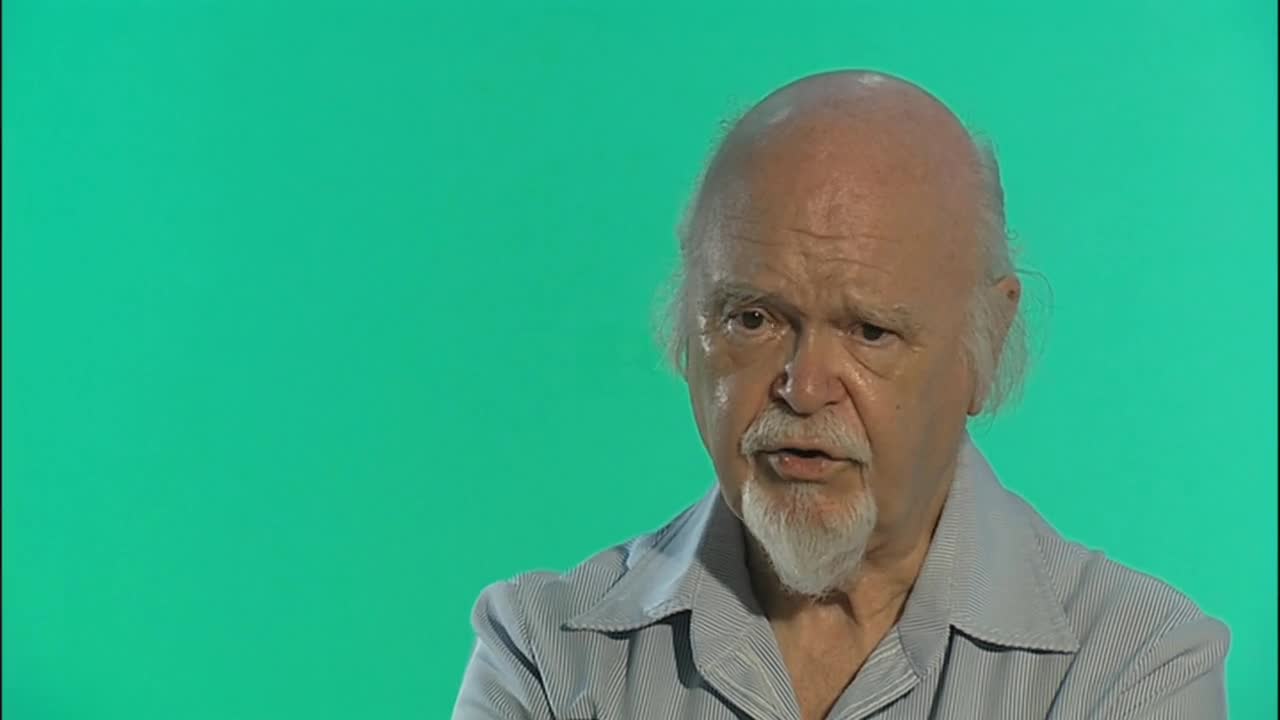
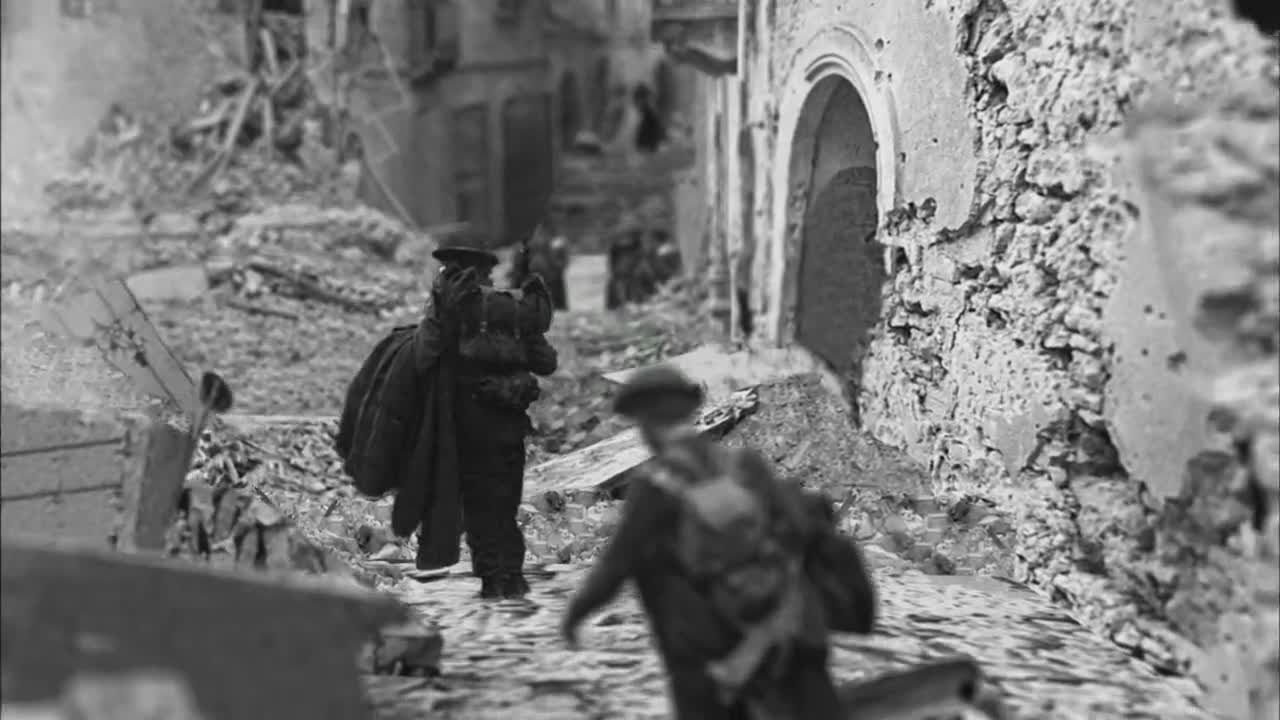
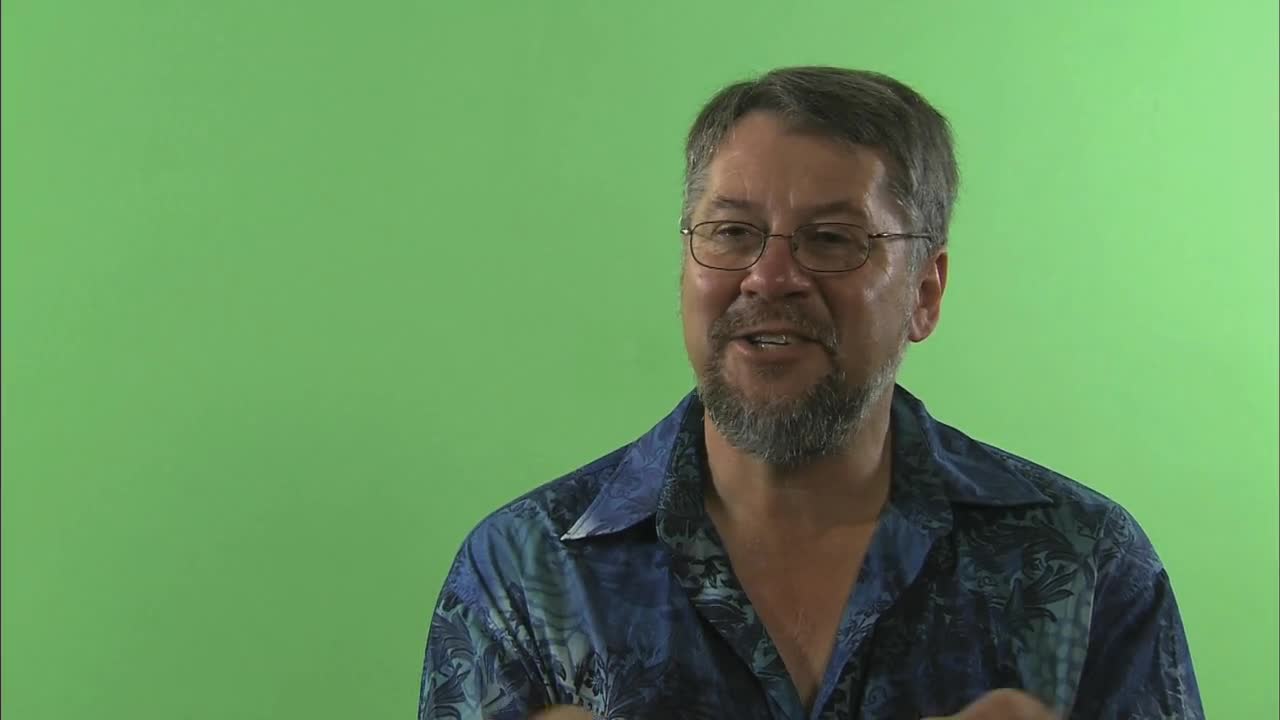
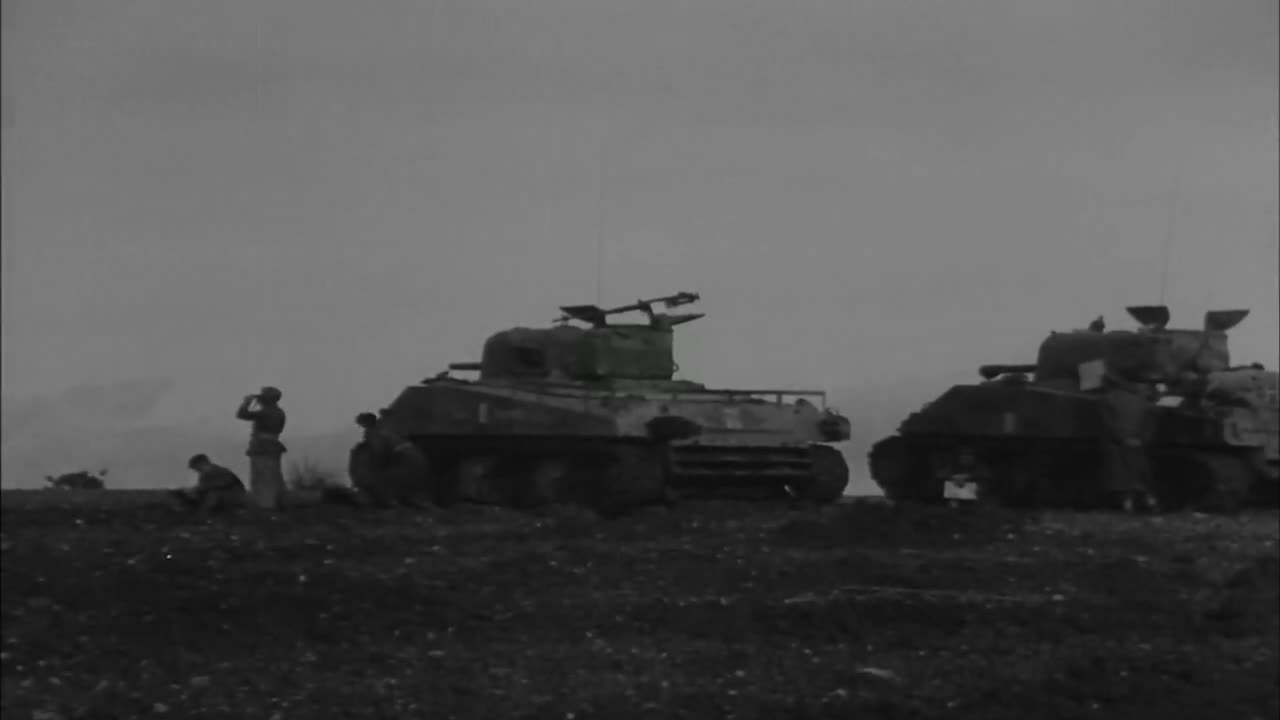
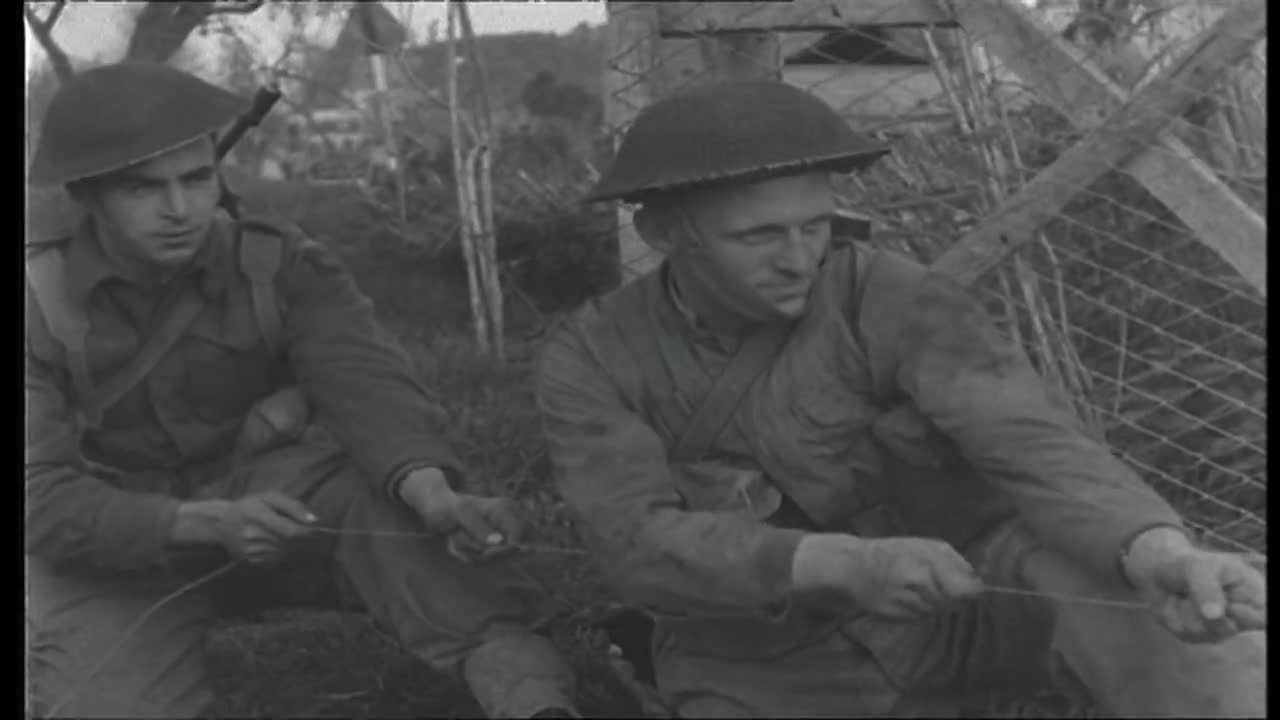
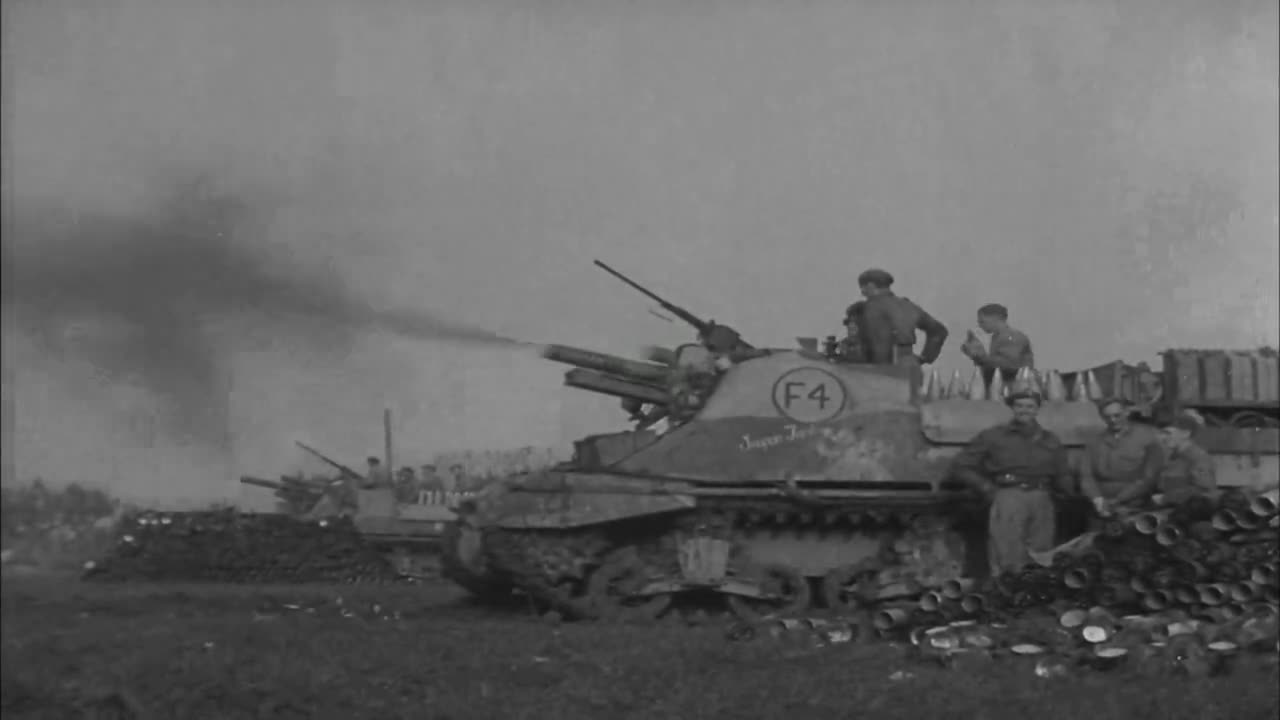
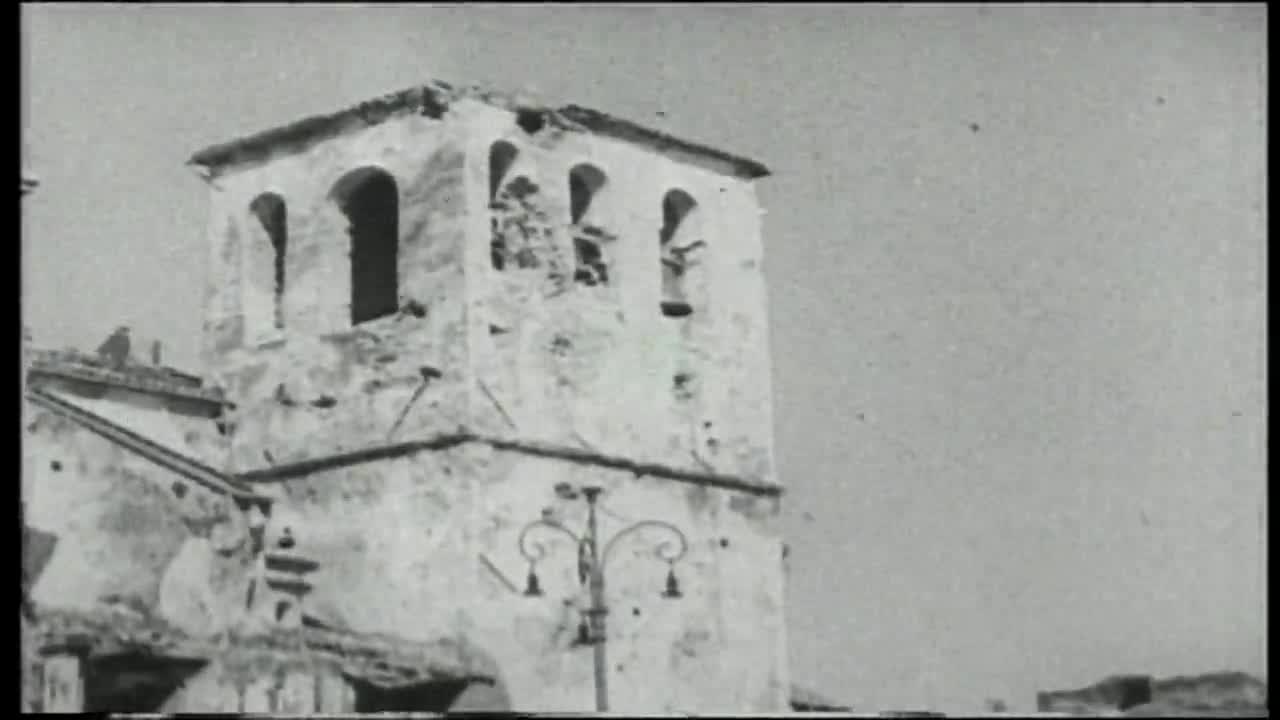
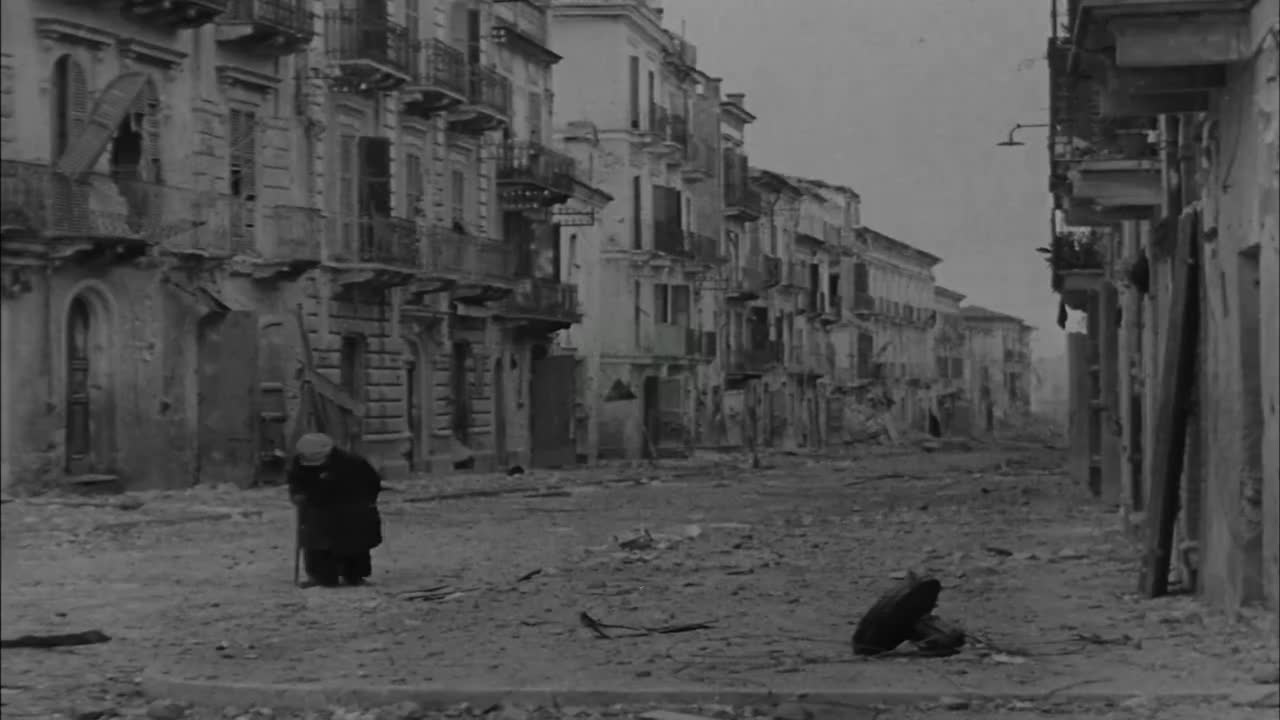
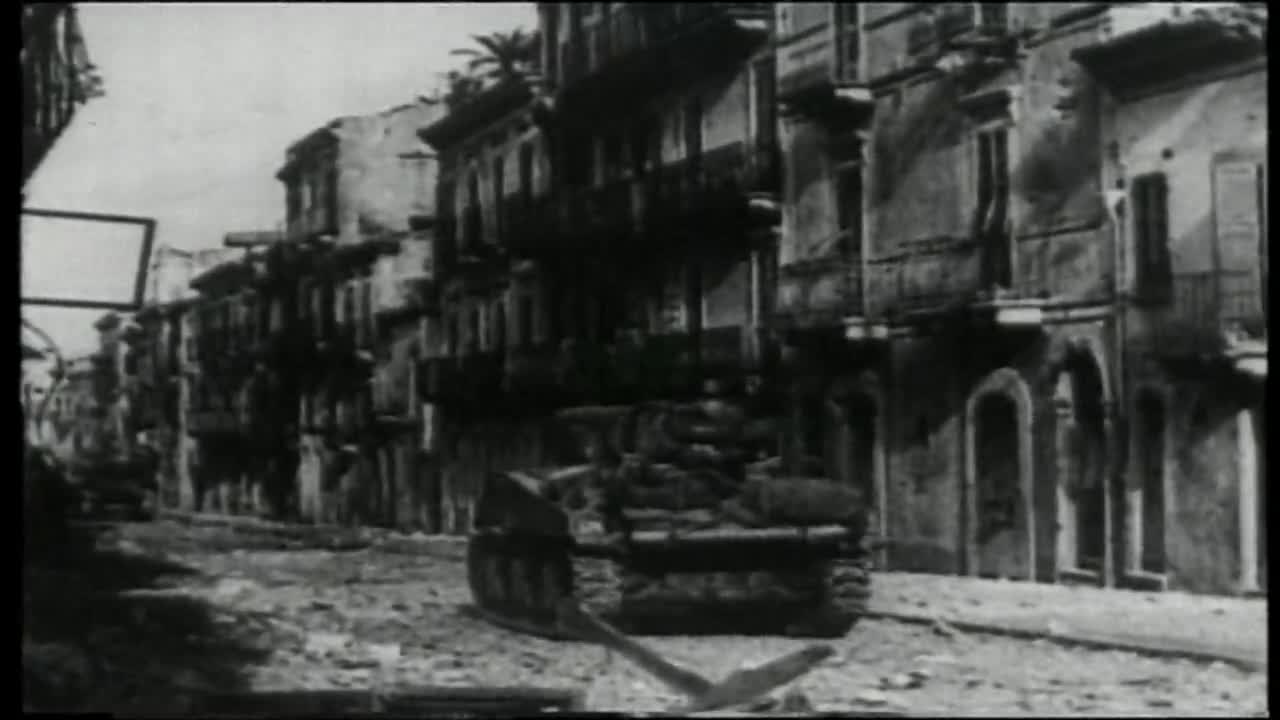
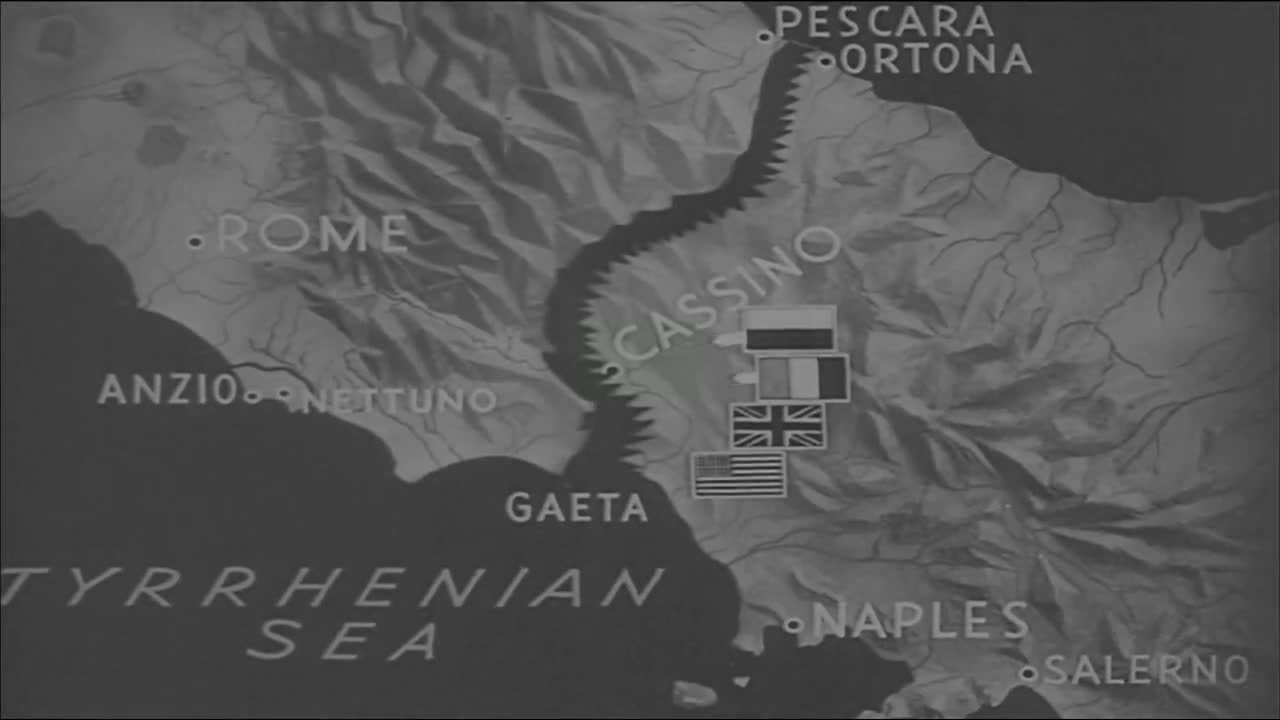


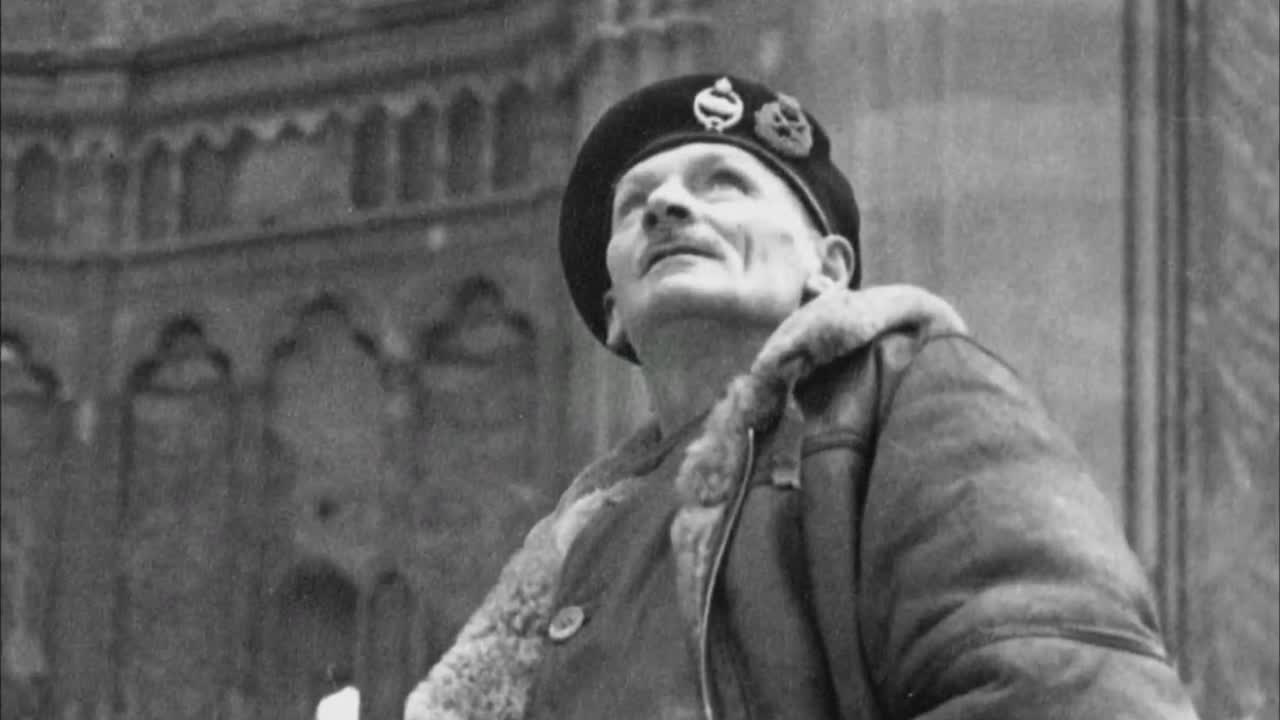

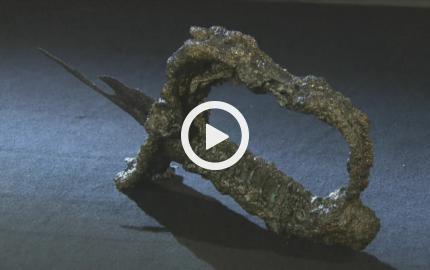

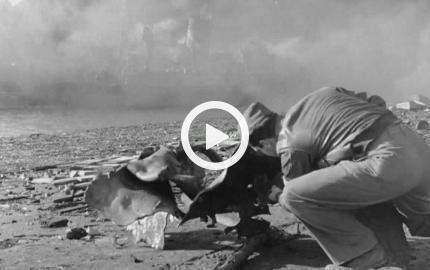
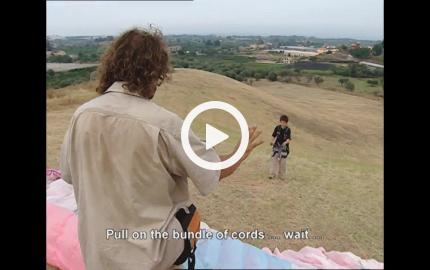
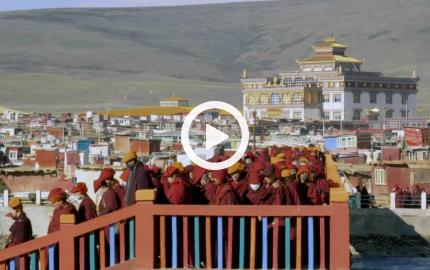
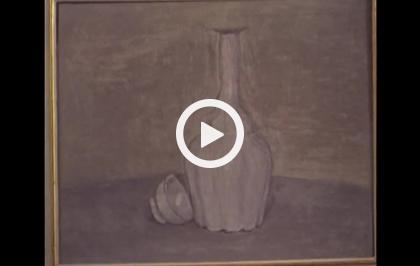

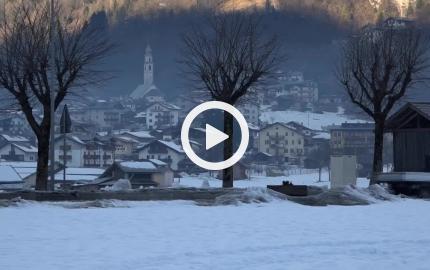
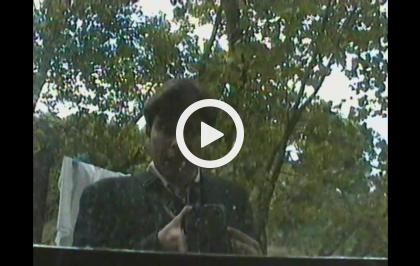
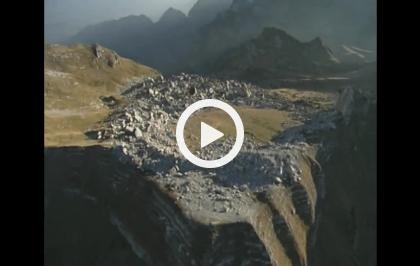
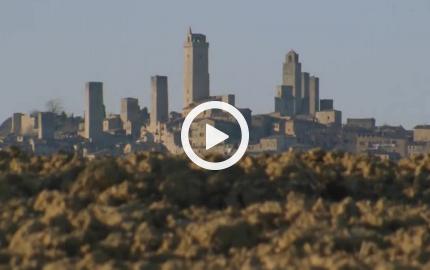

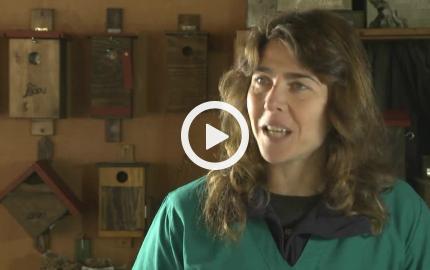

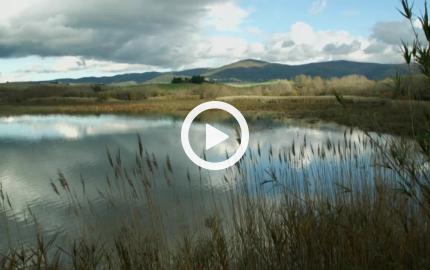


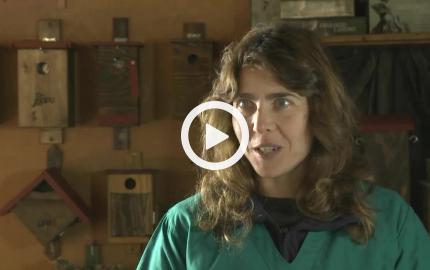
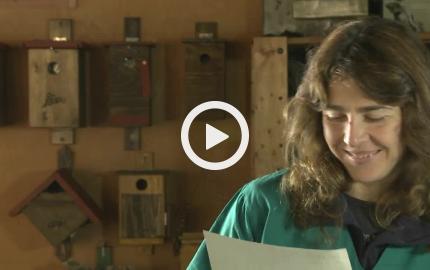


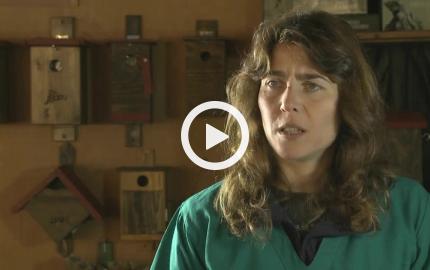
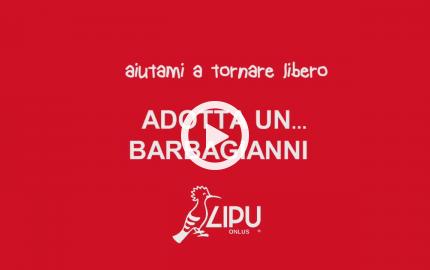






 è un marchio
è un marchio